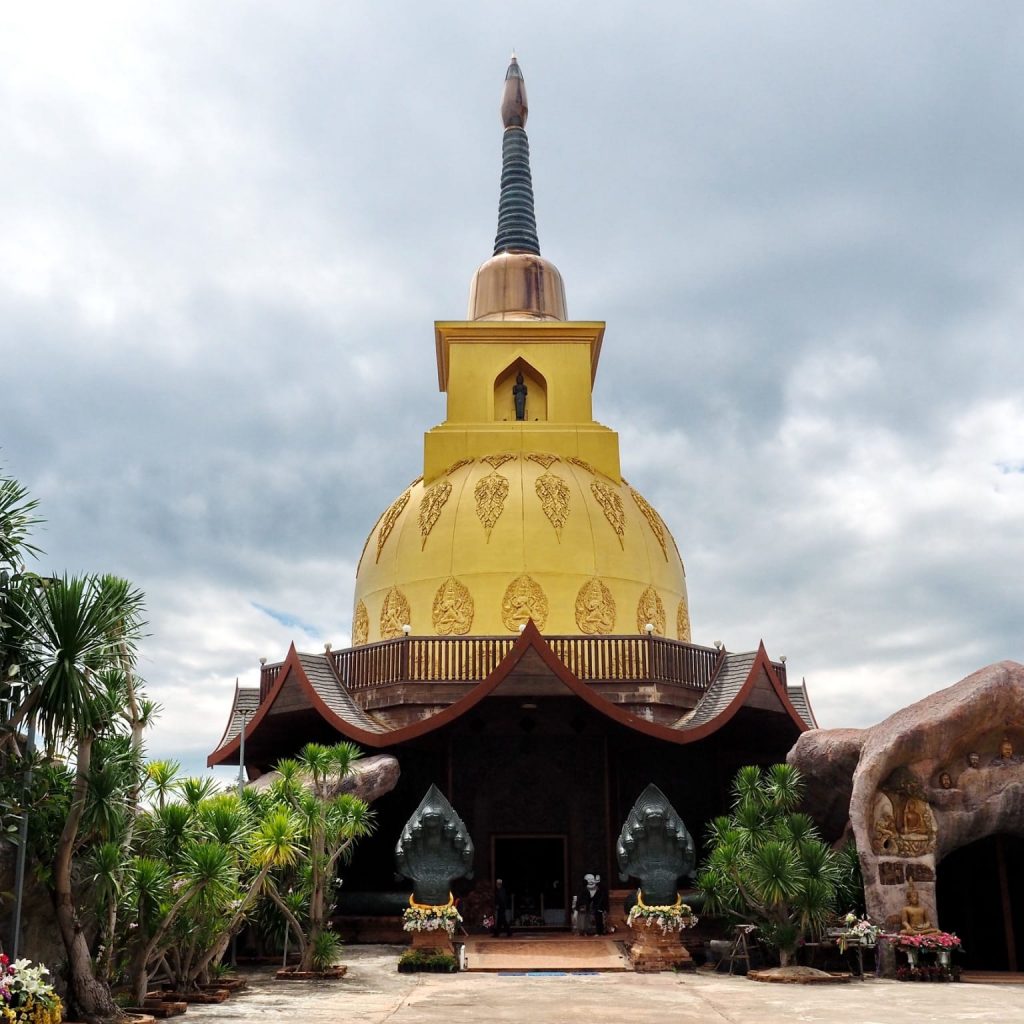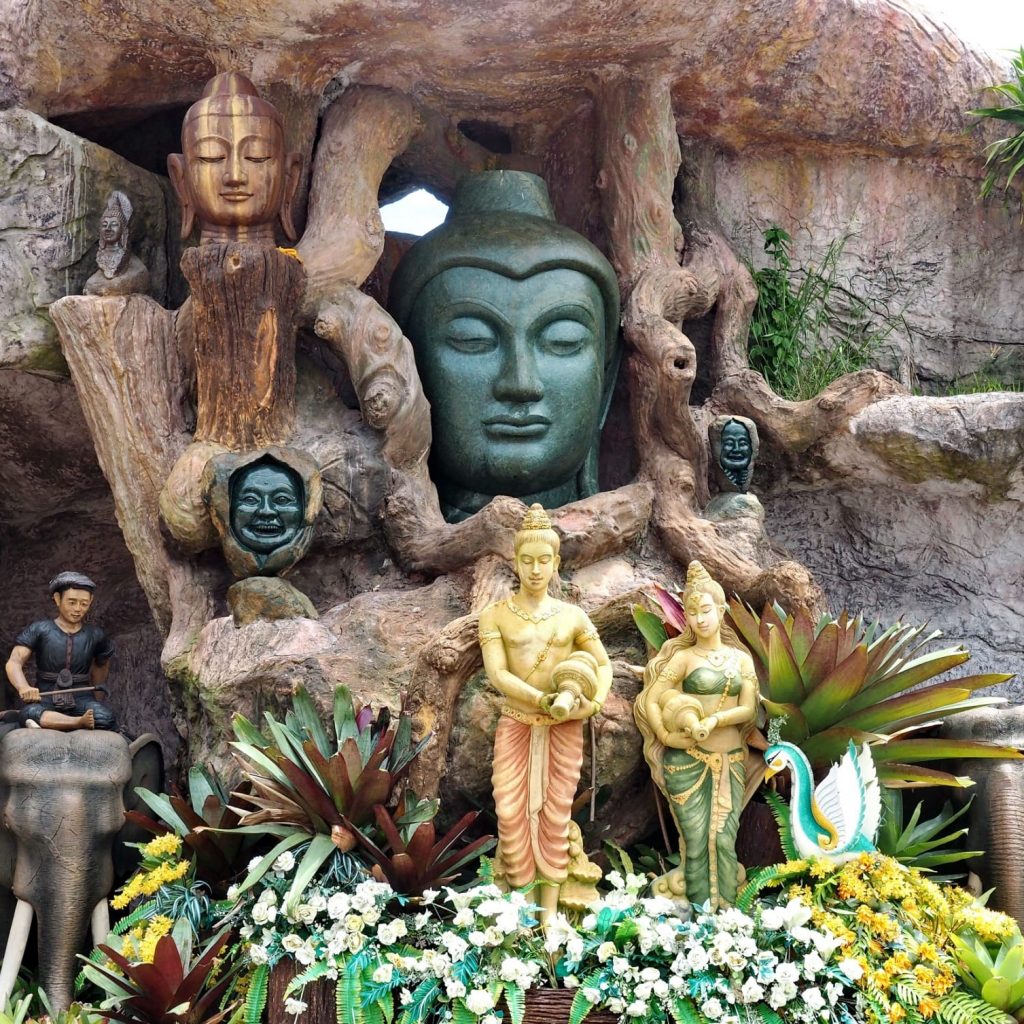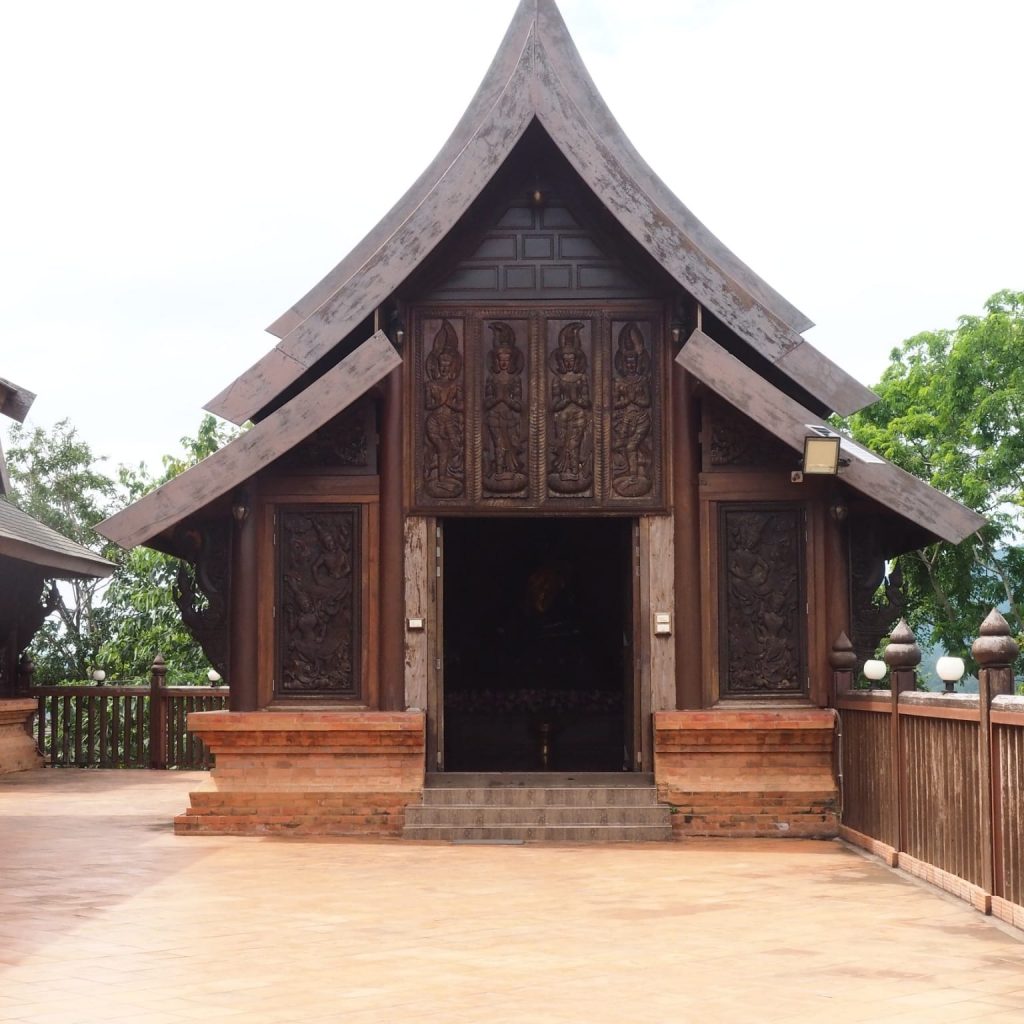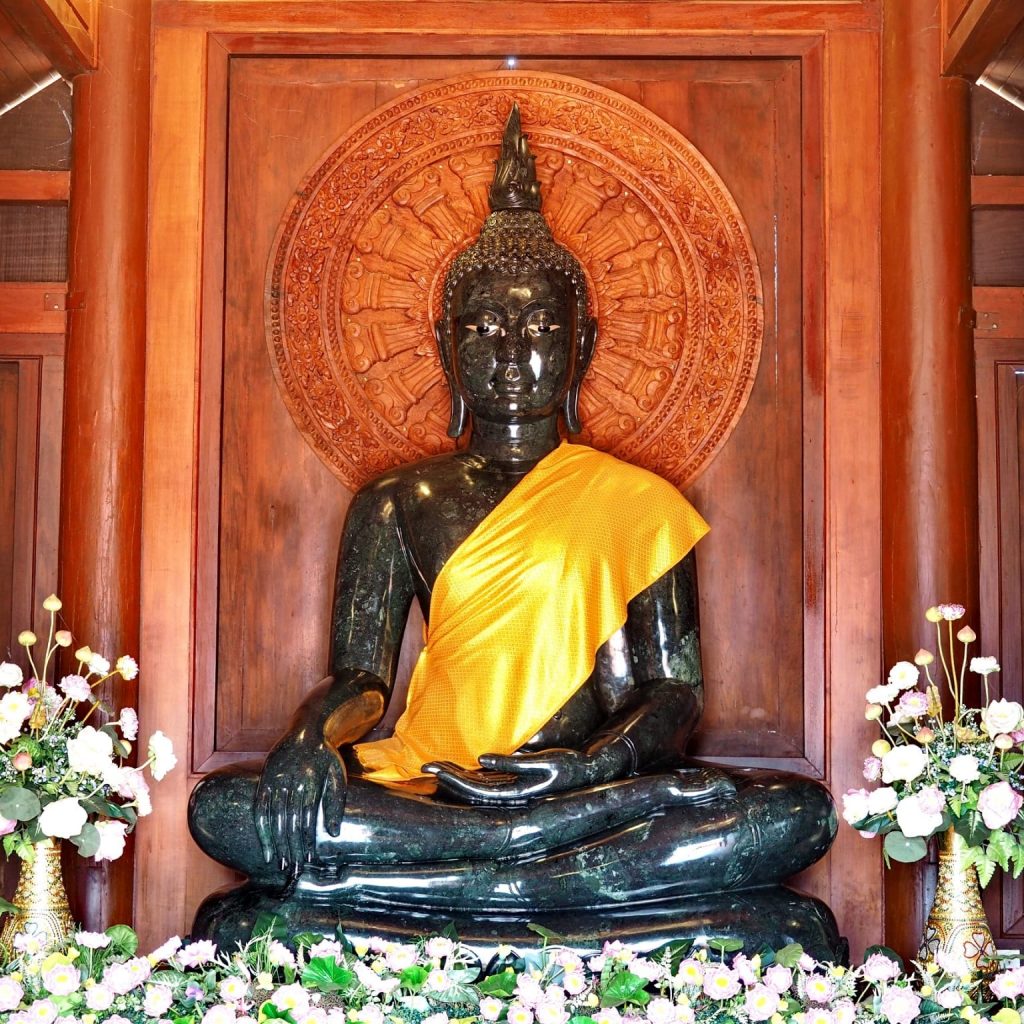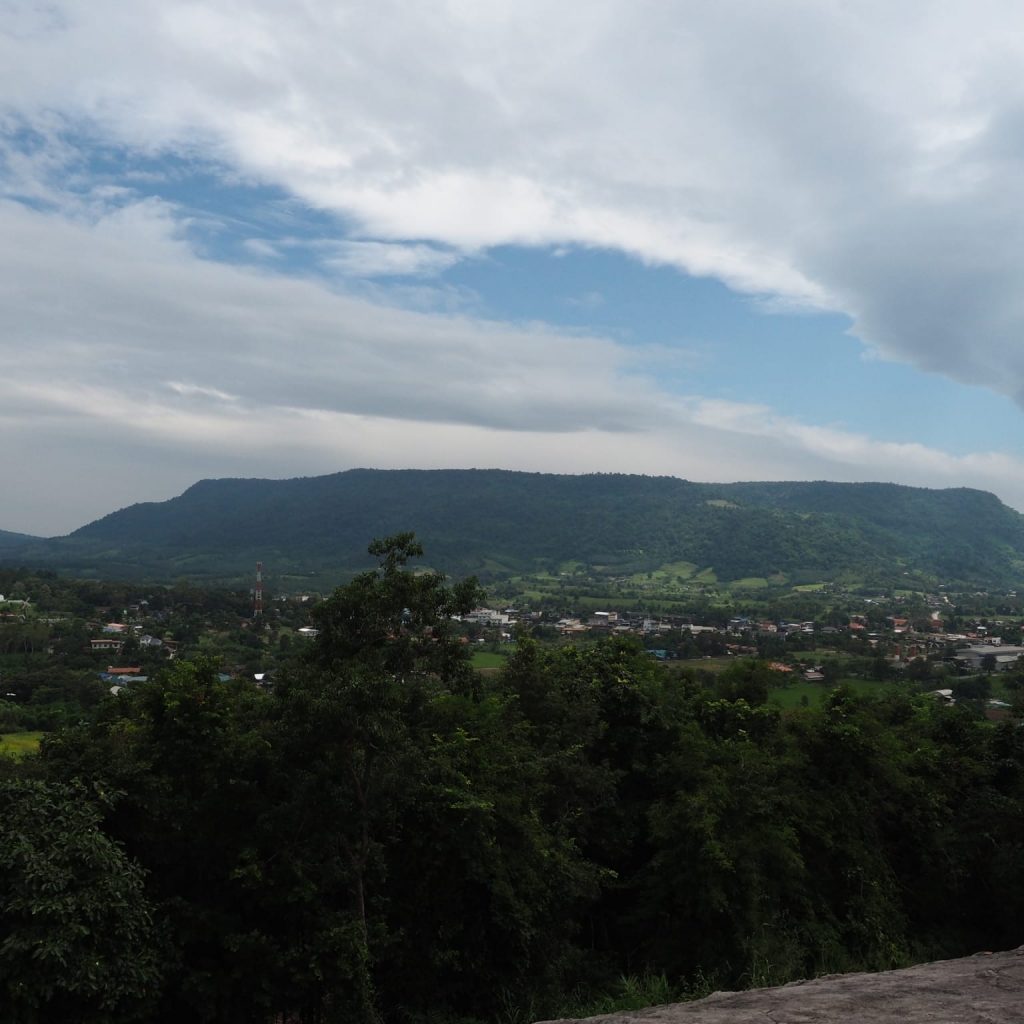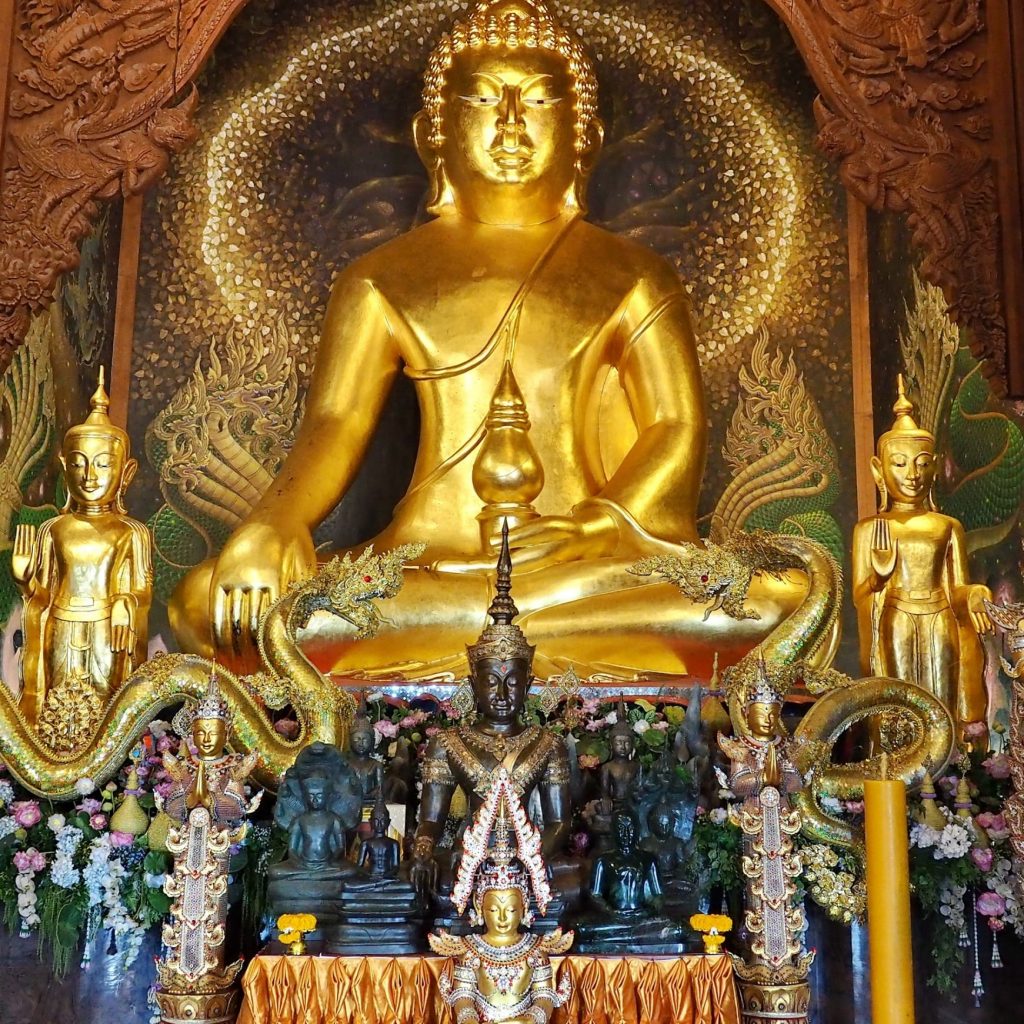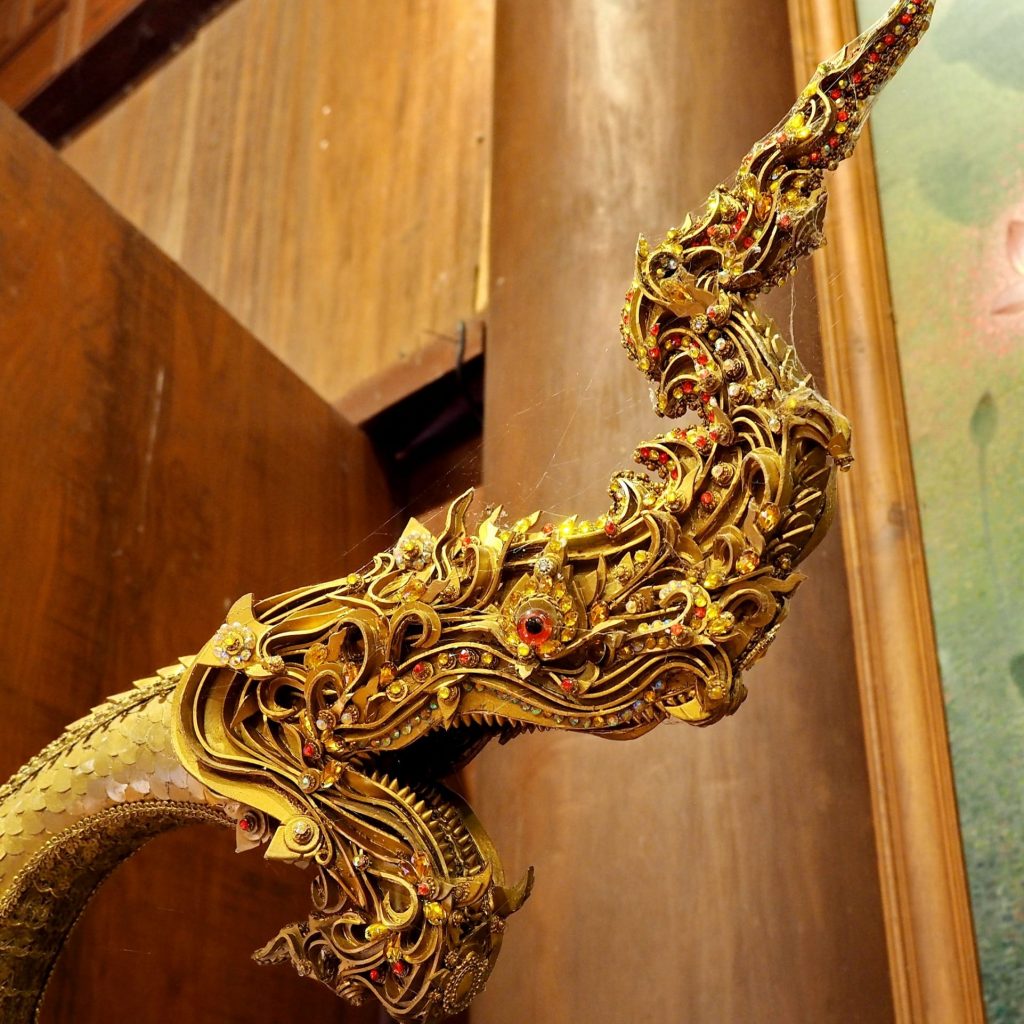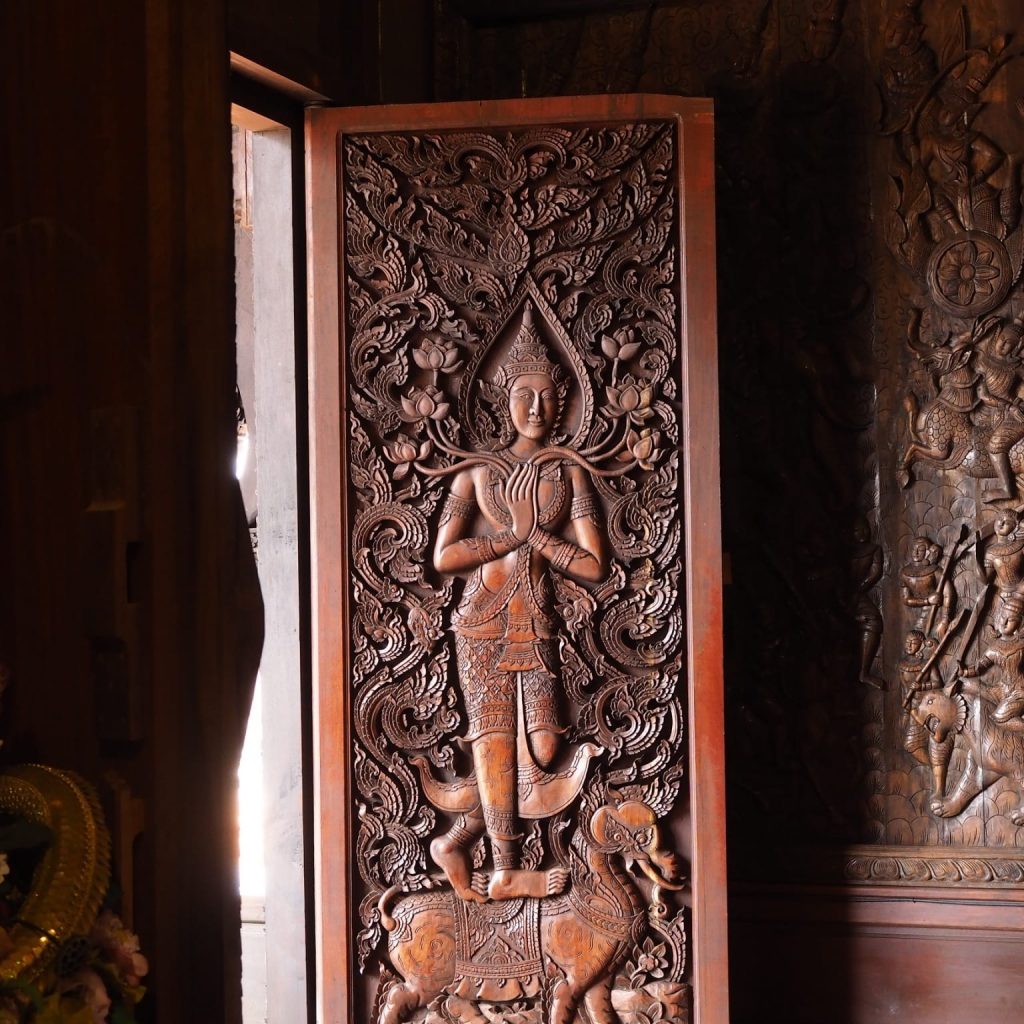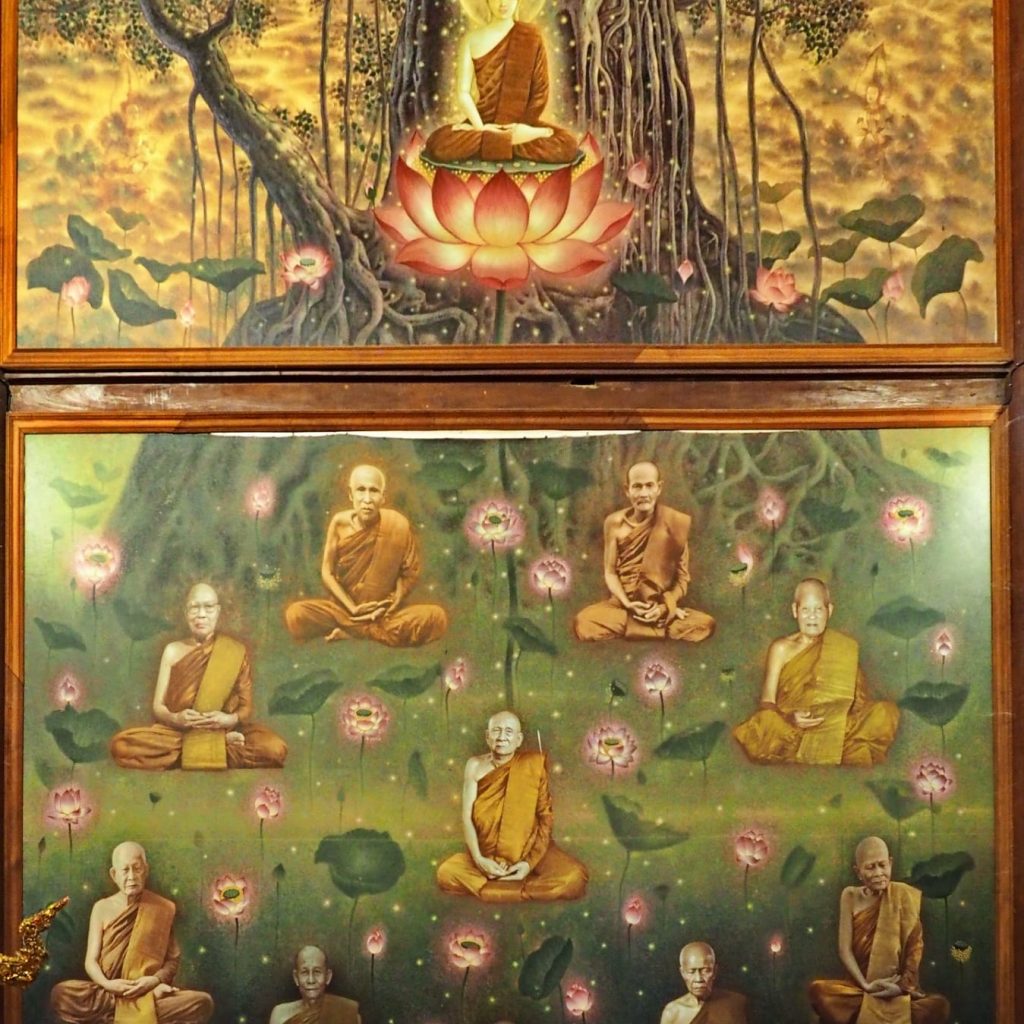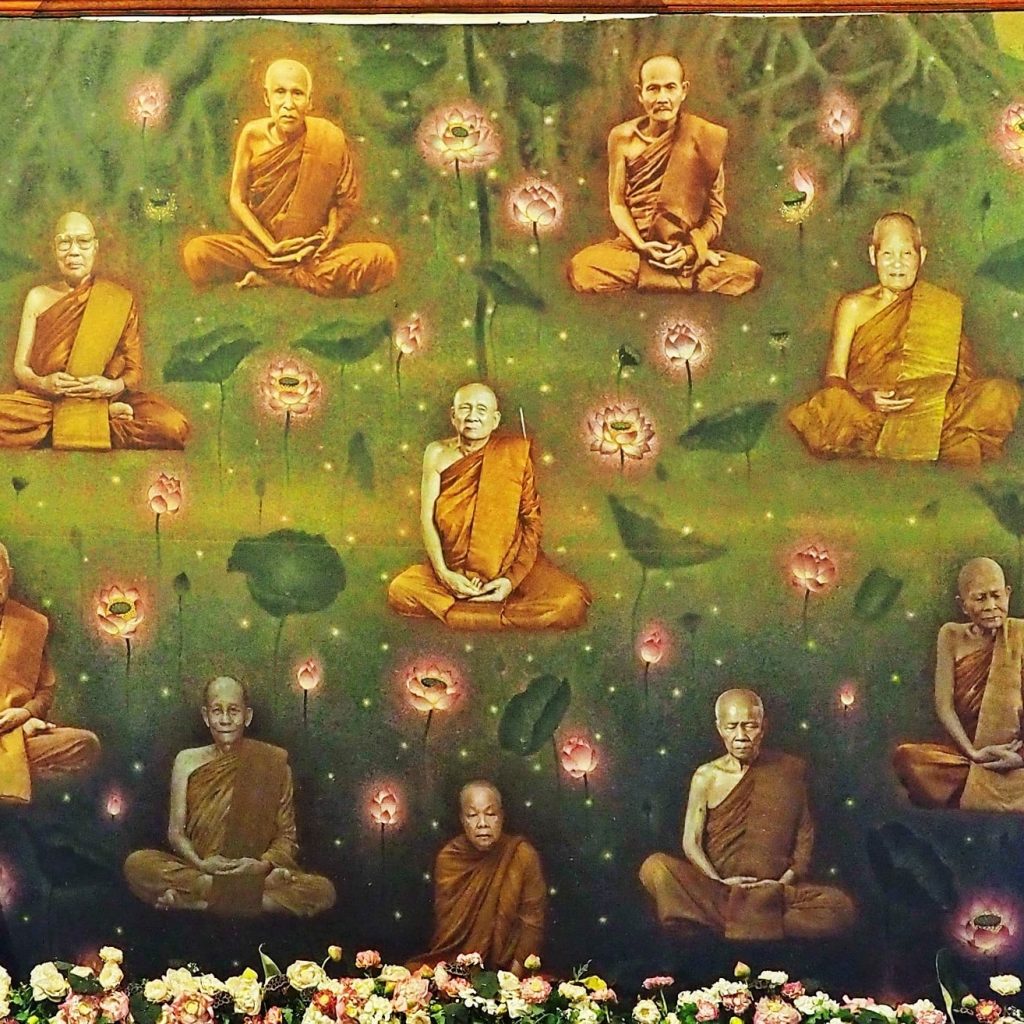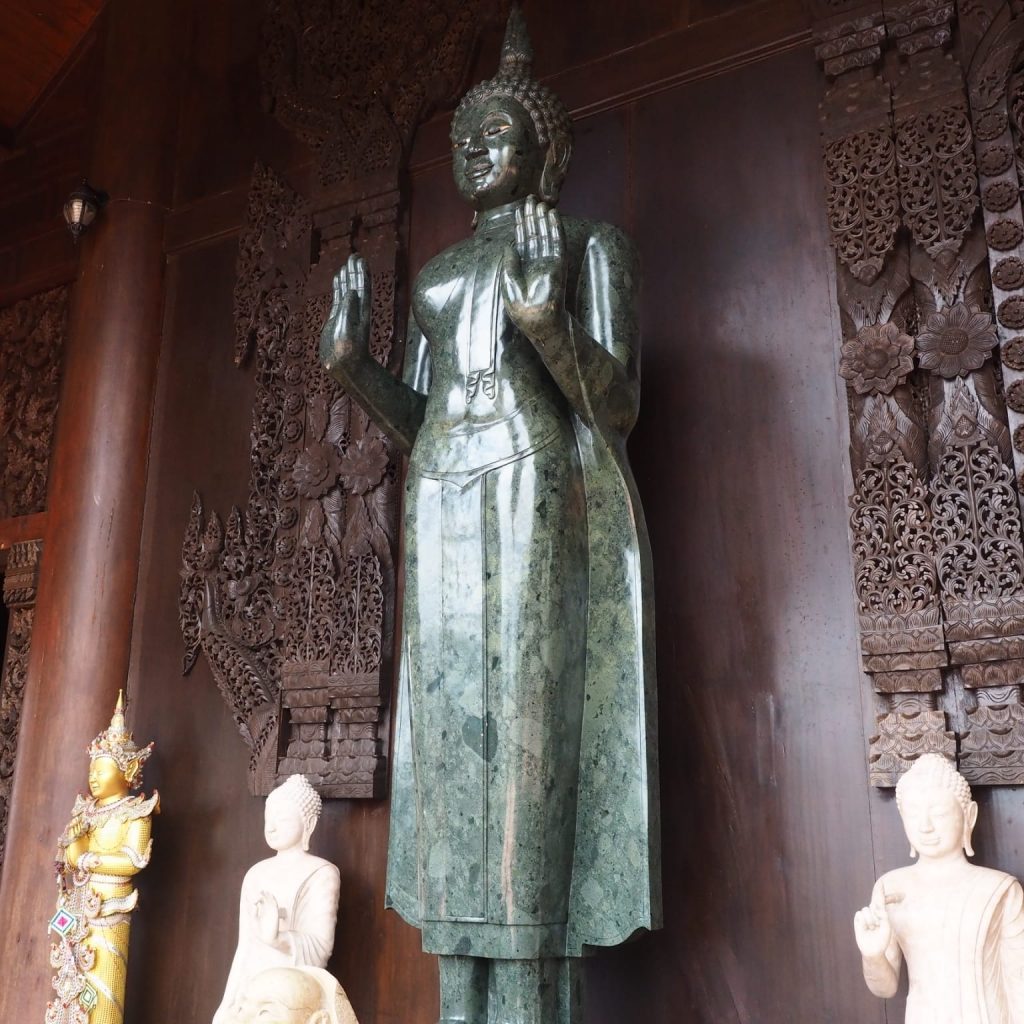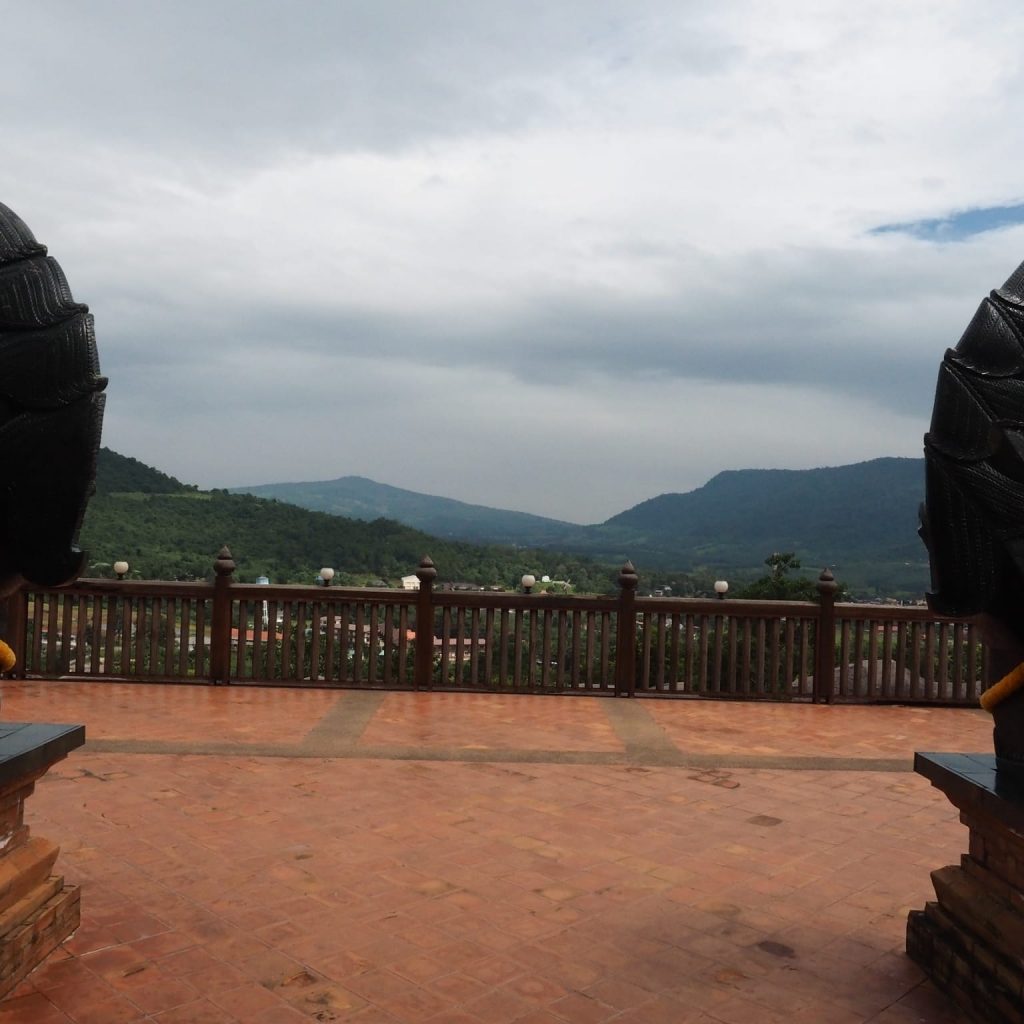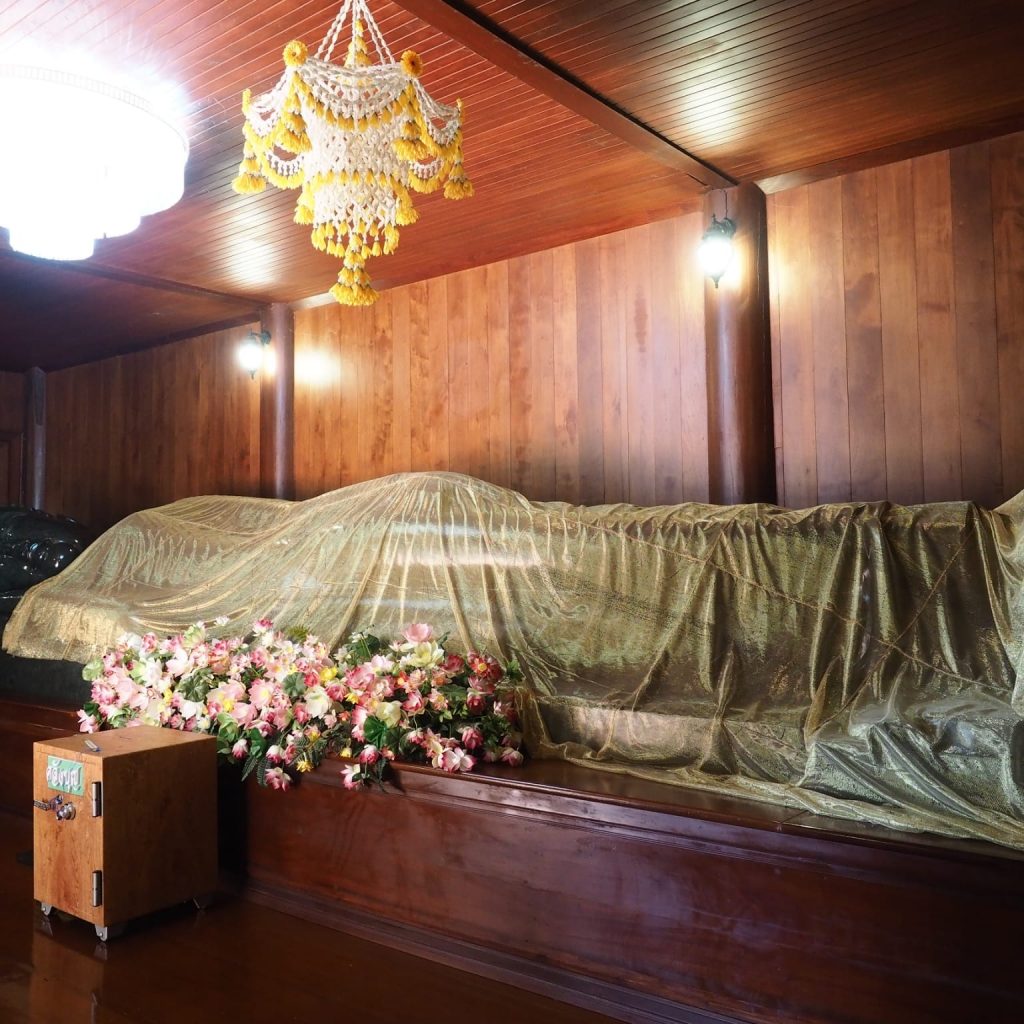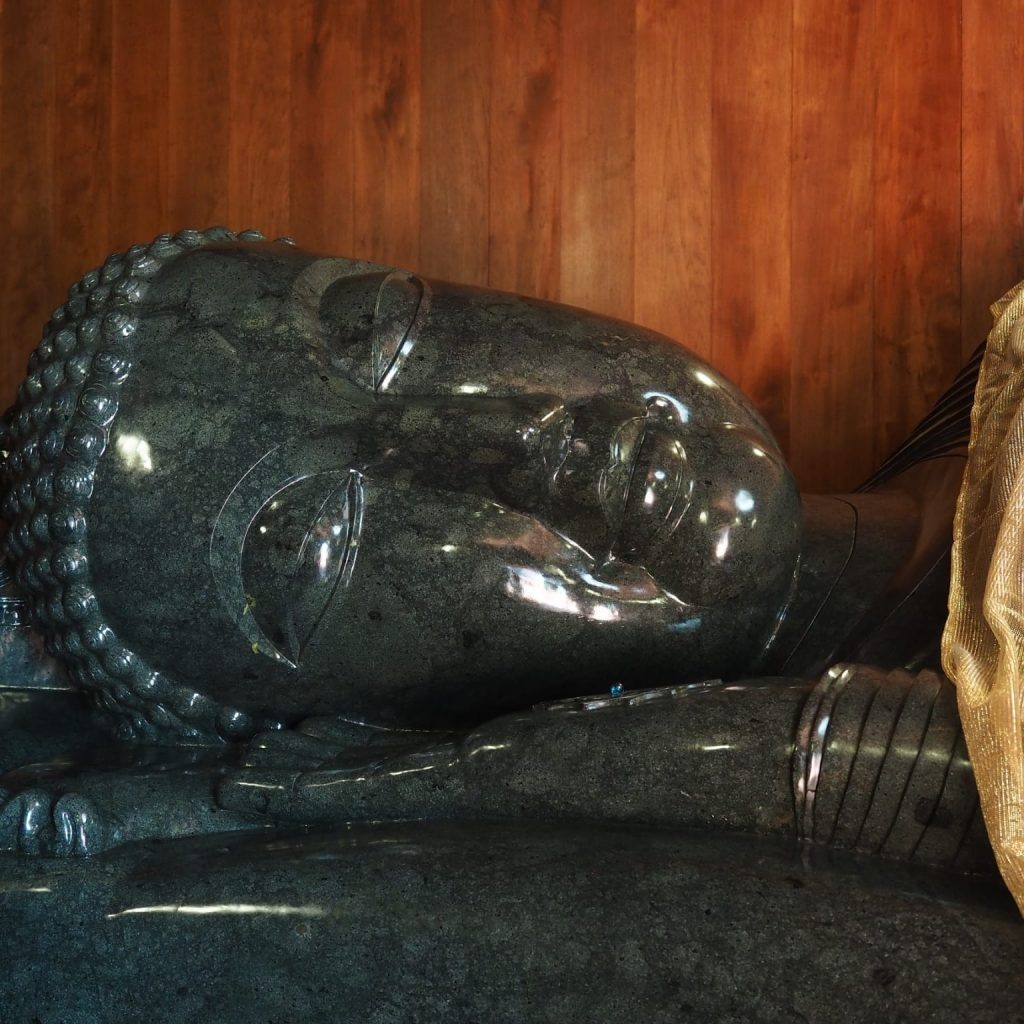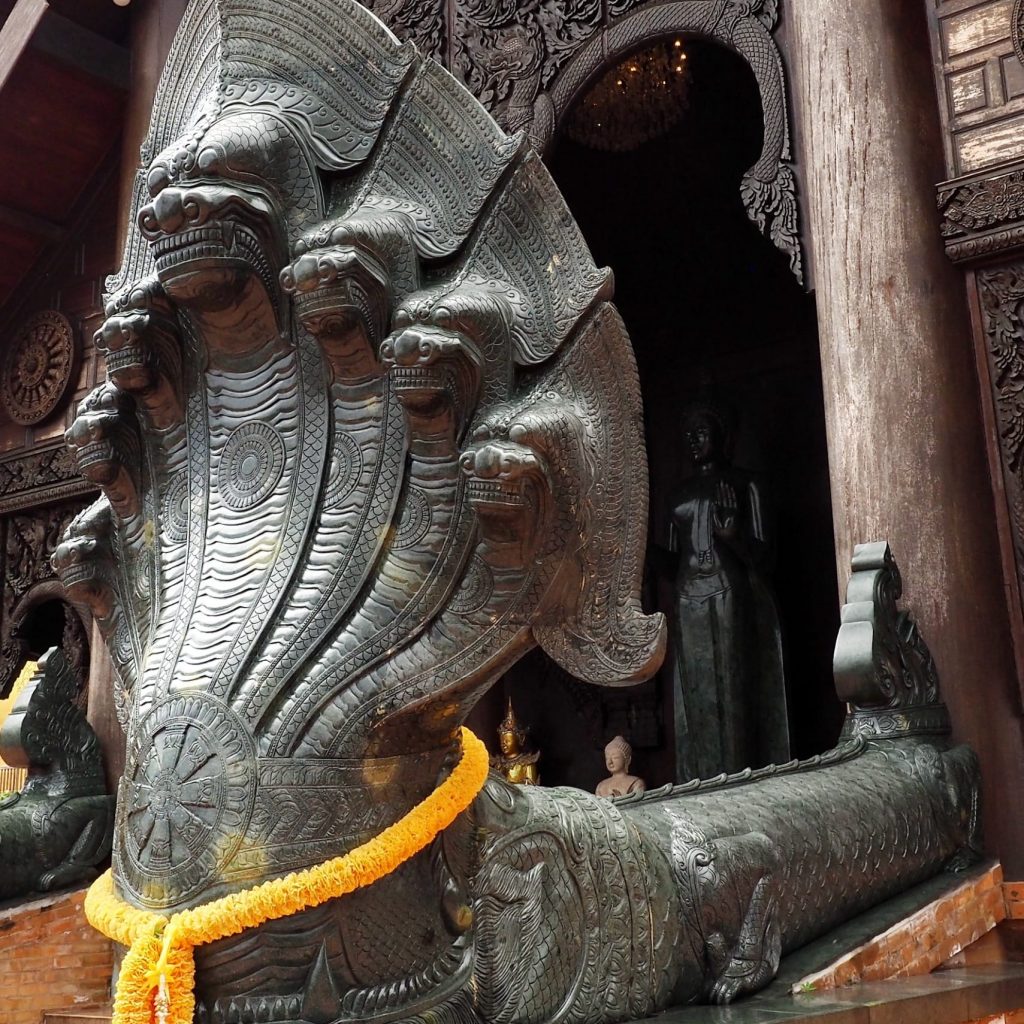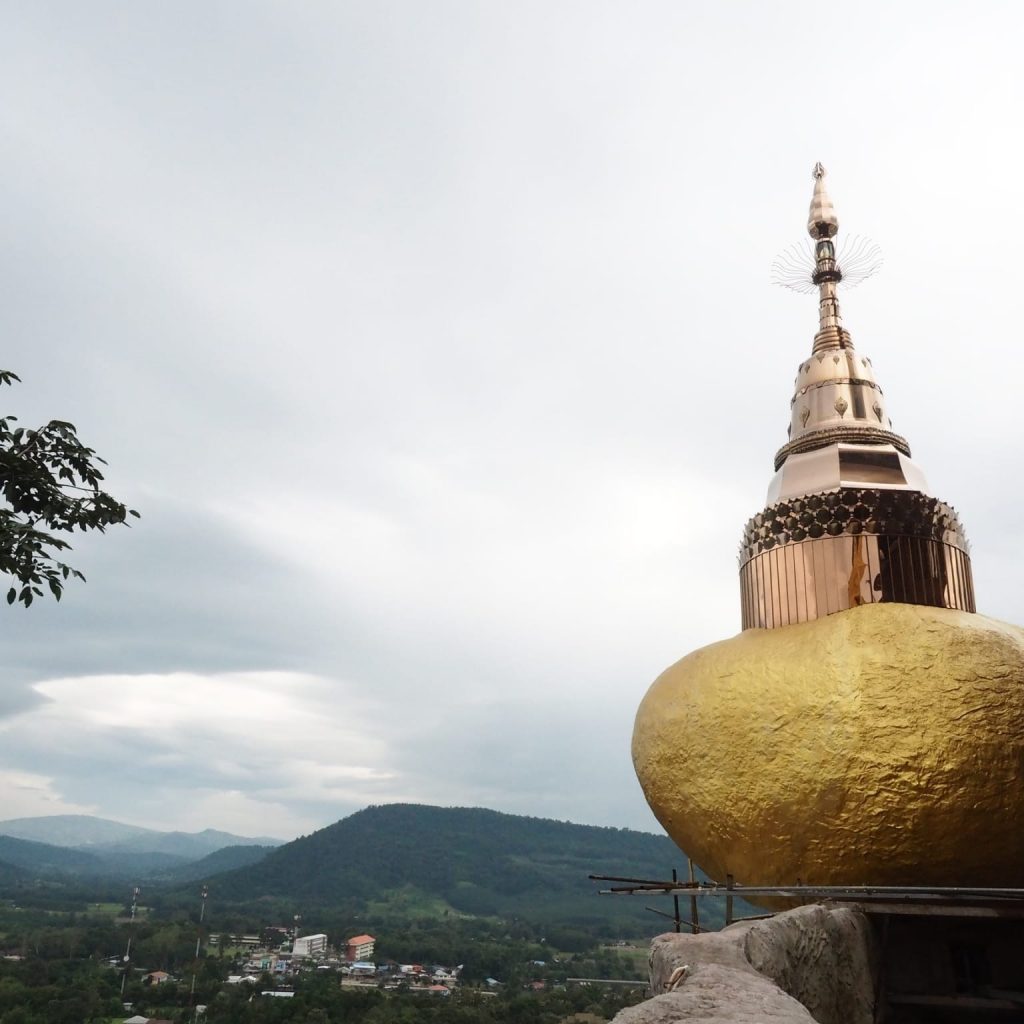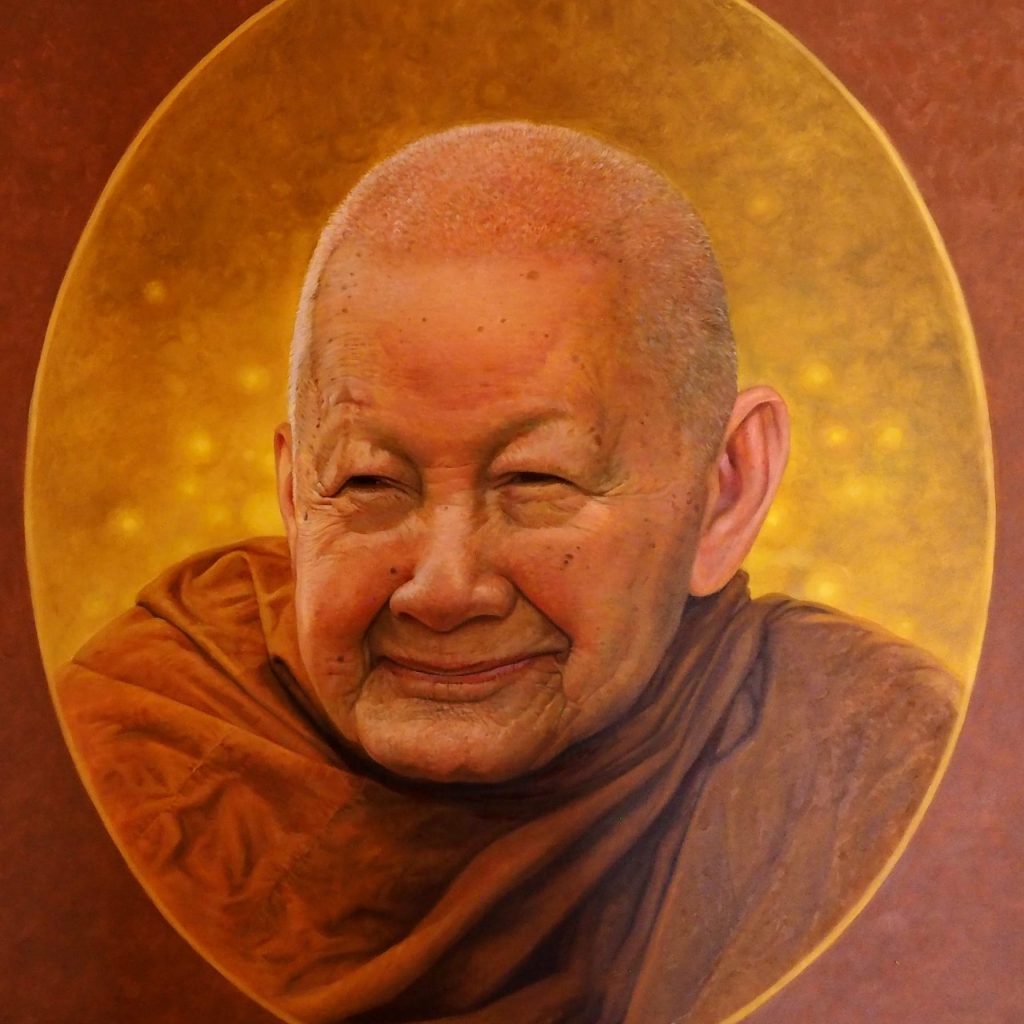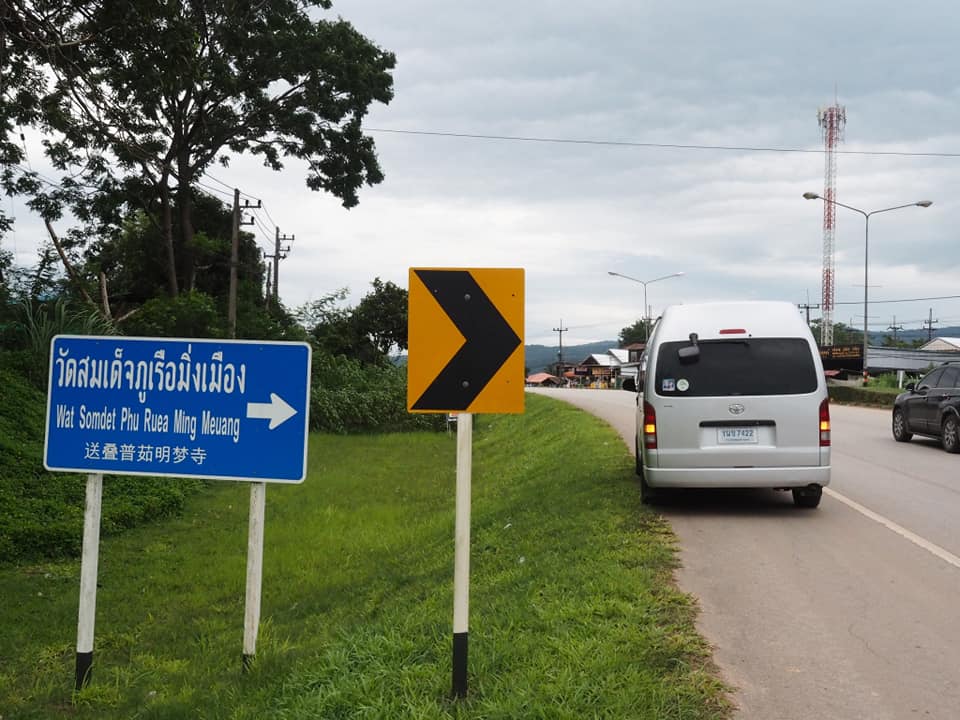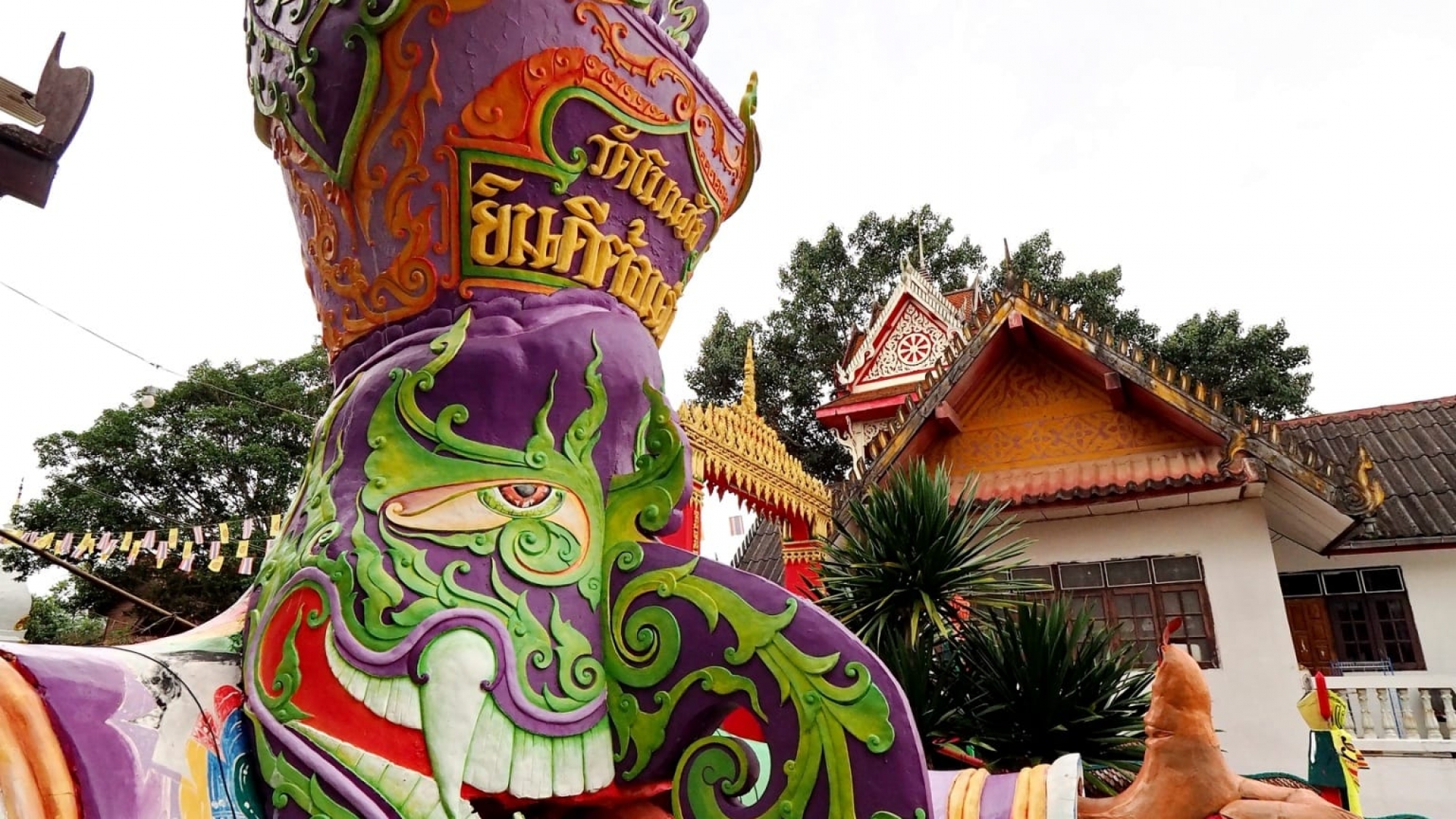Loei is a sparsely populated, mountainous province in northeast Thailand, bordering Laos across the Mekong River. South of the laid-back capital, Loei, is the biodiverse Phu Kradueng, National Park. Trails pass waterfalls and sandstone cliffs on their way up the huge plateau of Phu Kradueng mountain. North of the park is the striking eroded limestone formations of Suan Hin Pha Ngam, or “Beautiful Rock Garden.”
Loei is an up-and-coming ecotourism region surrounded by undulating mountain ranges, abundant with various flora and capped with fog-enshrouded summits. However, while Loei features numerous outdoor activities and fascinating cultural attractions, tourism is relatively new to the province and the area is remarkably unspoiled.
One of the Top destinations of Loei, “Chiang Khan” is a peaceful city with interesting attractions. The Chiang Khan Walking street is one of the places you can’t miss. You can enjoy walking and Shopping for Local products and Food on the street with the over-100-year buildings along both sides of the street. The recommended food are Khaoa Peak Sen (rice noodles soup), Mieng Kham (savory leaf wraps), Khaow Chee (grilled sticky rice), and ancient ice cream.
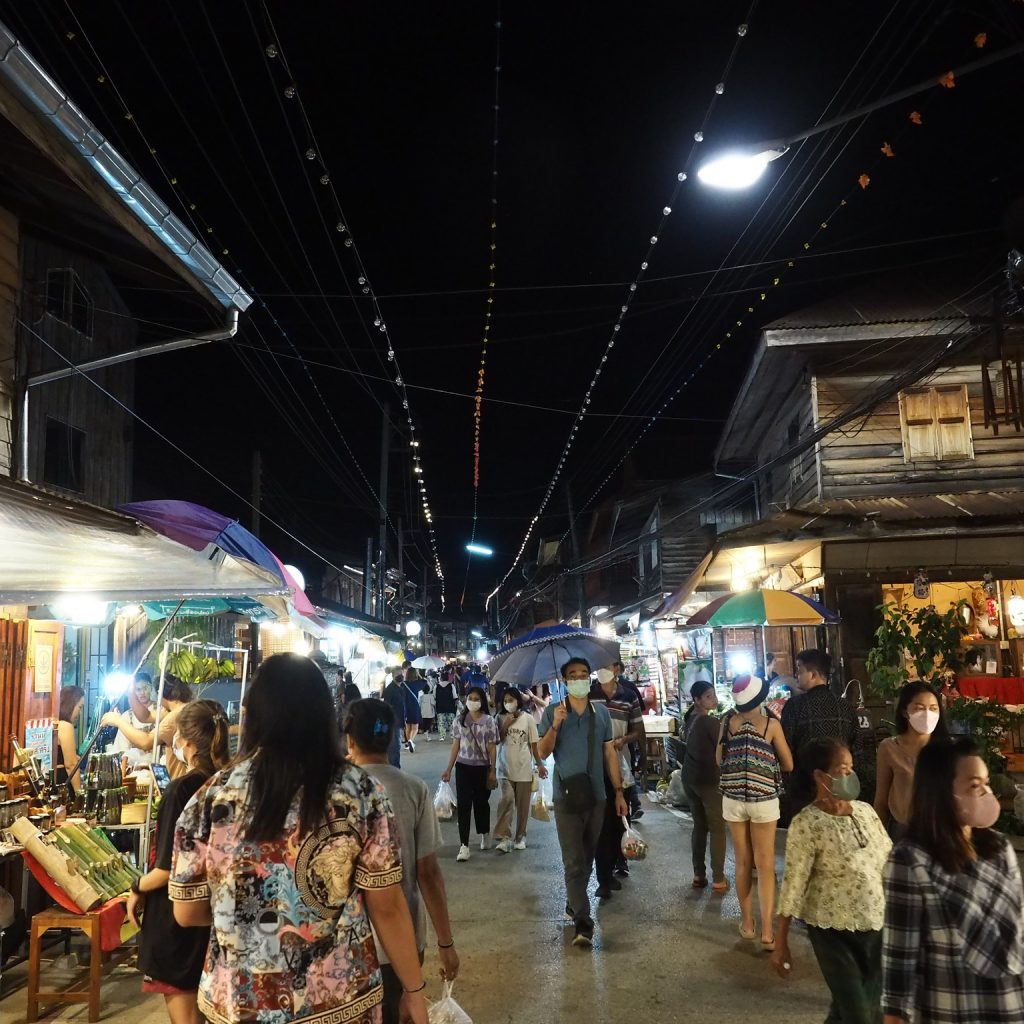
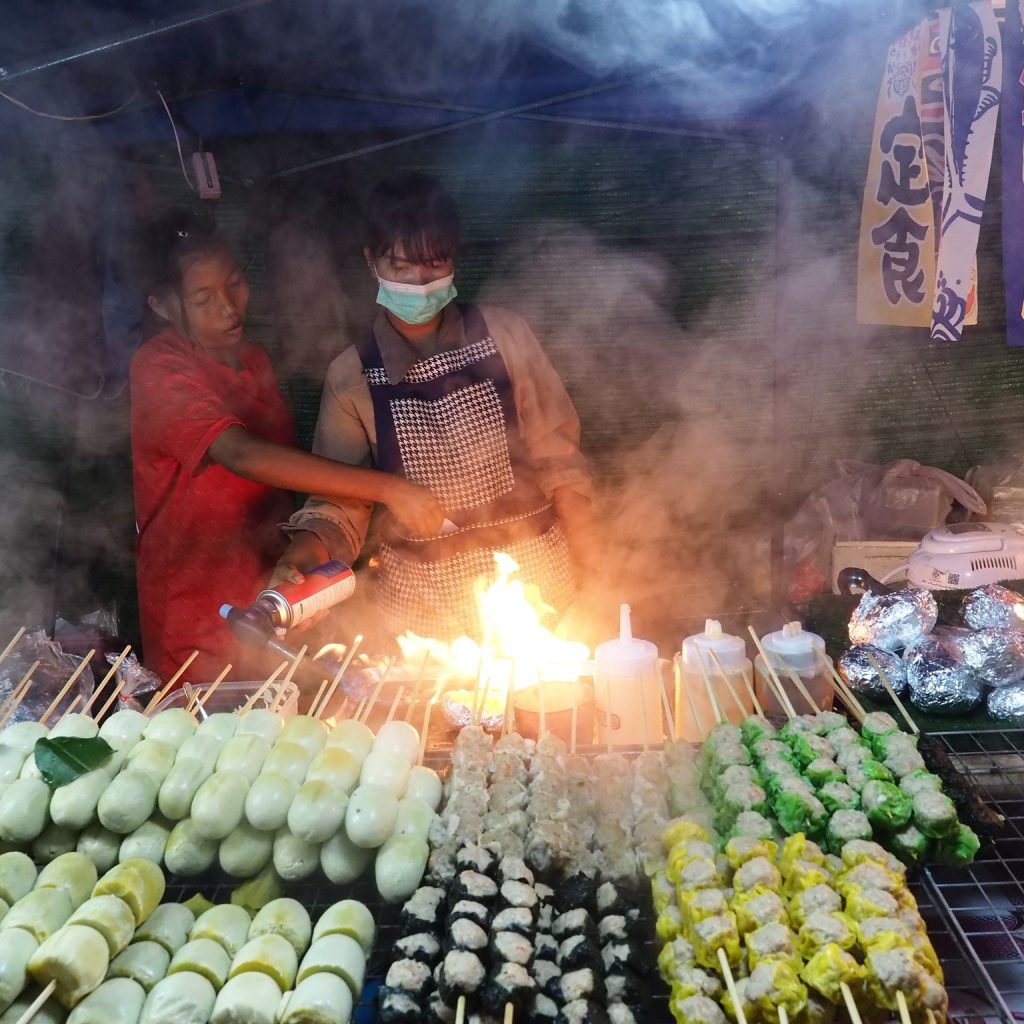
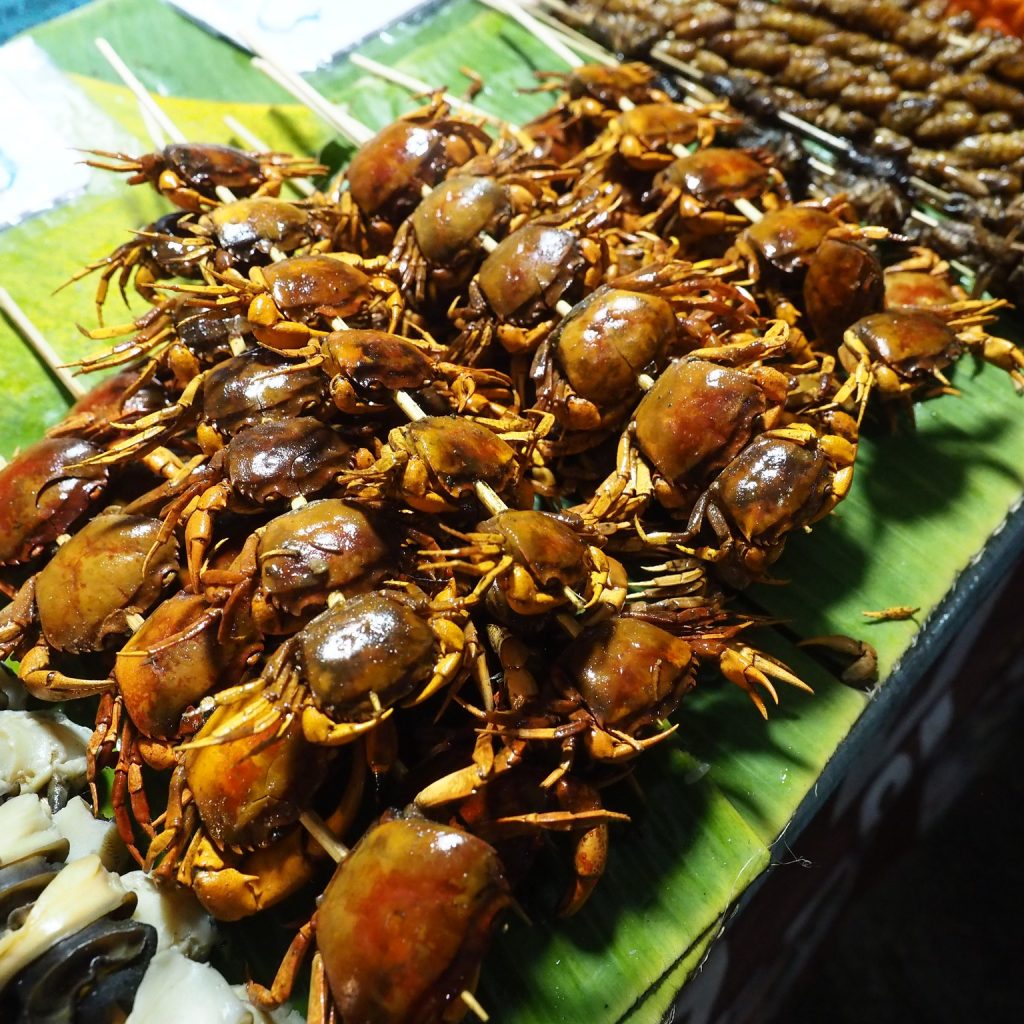
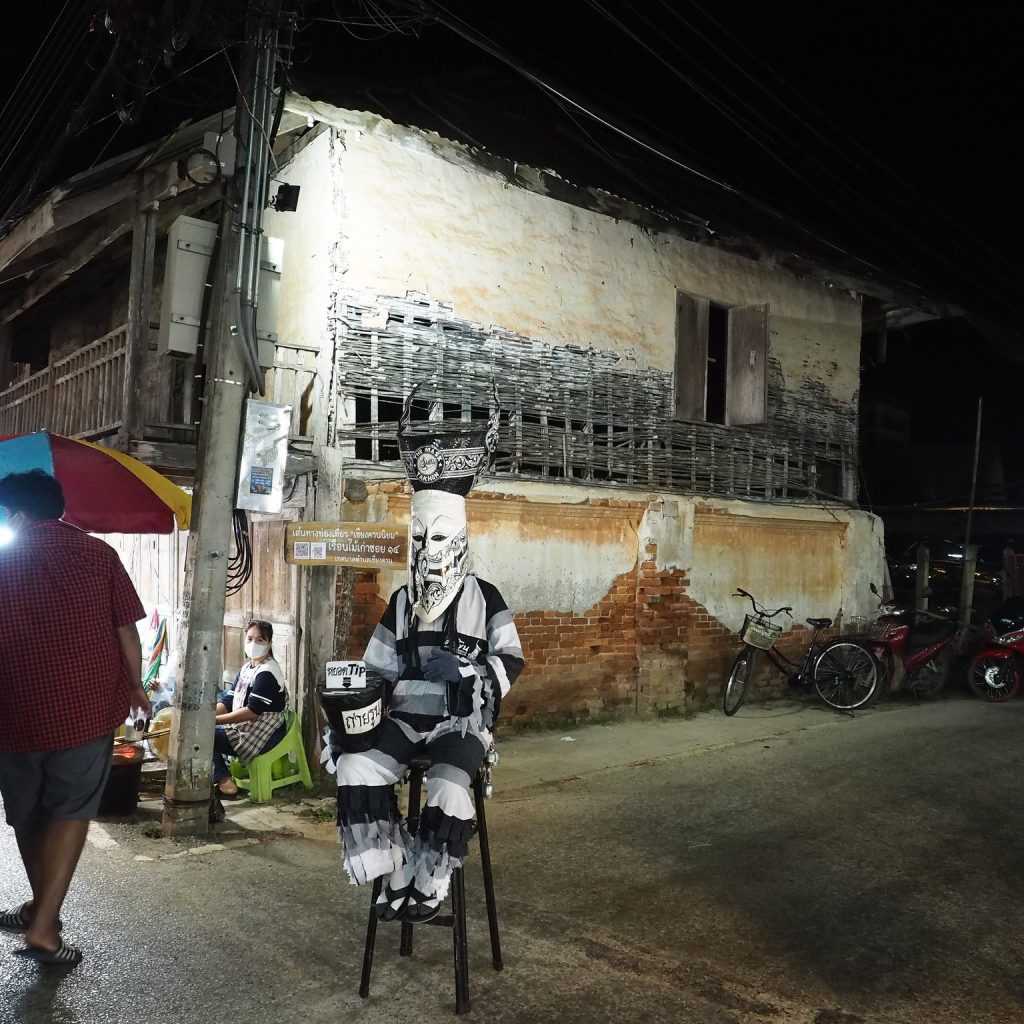
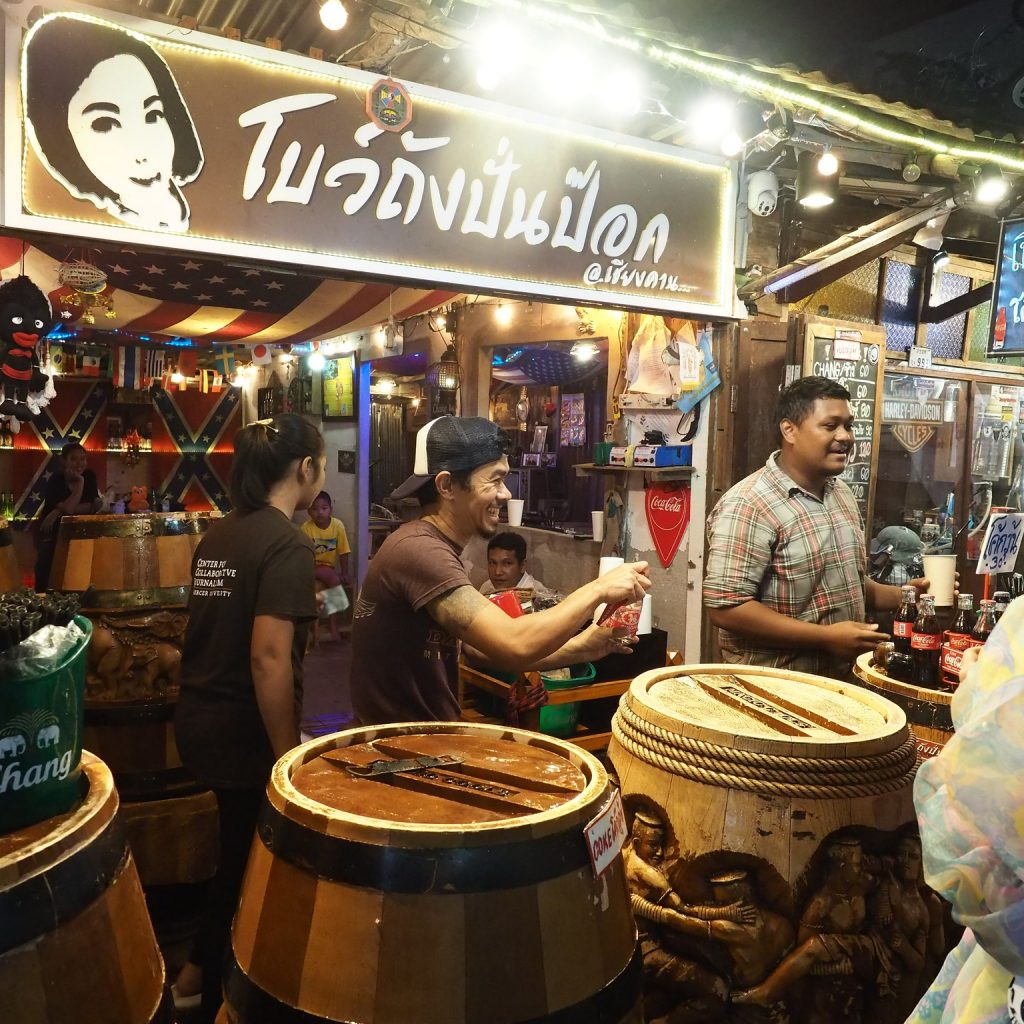
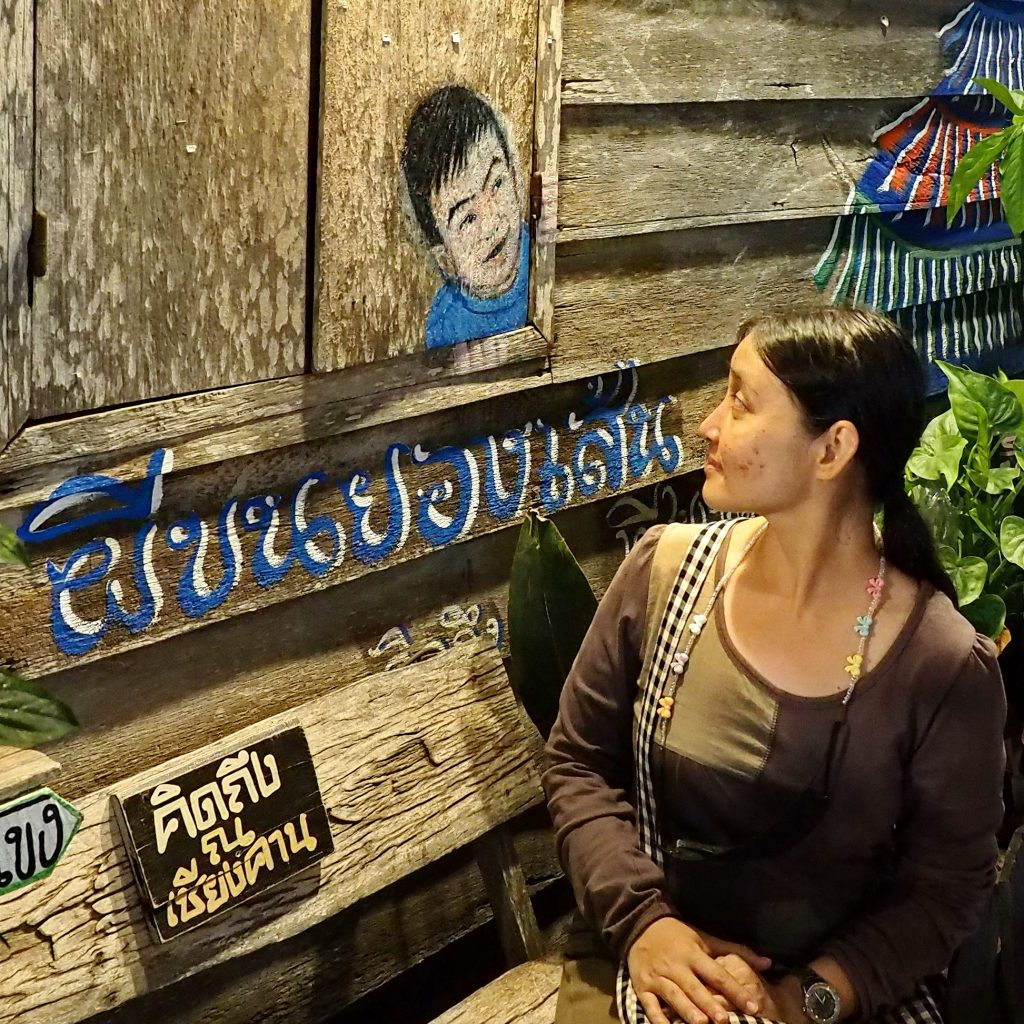
Chiang Kan by Night
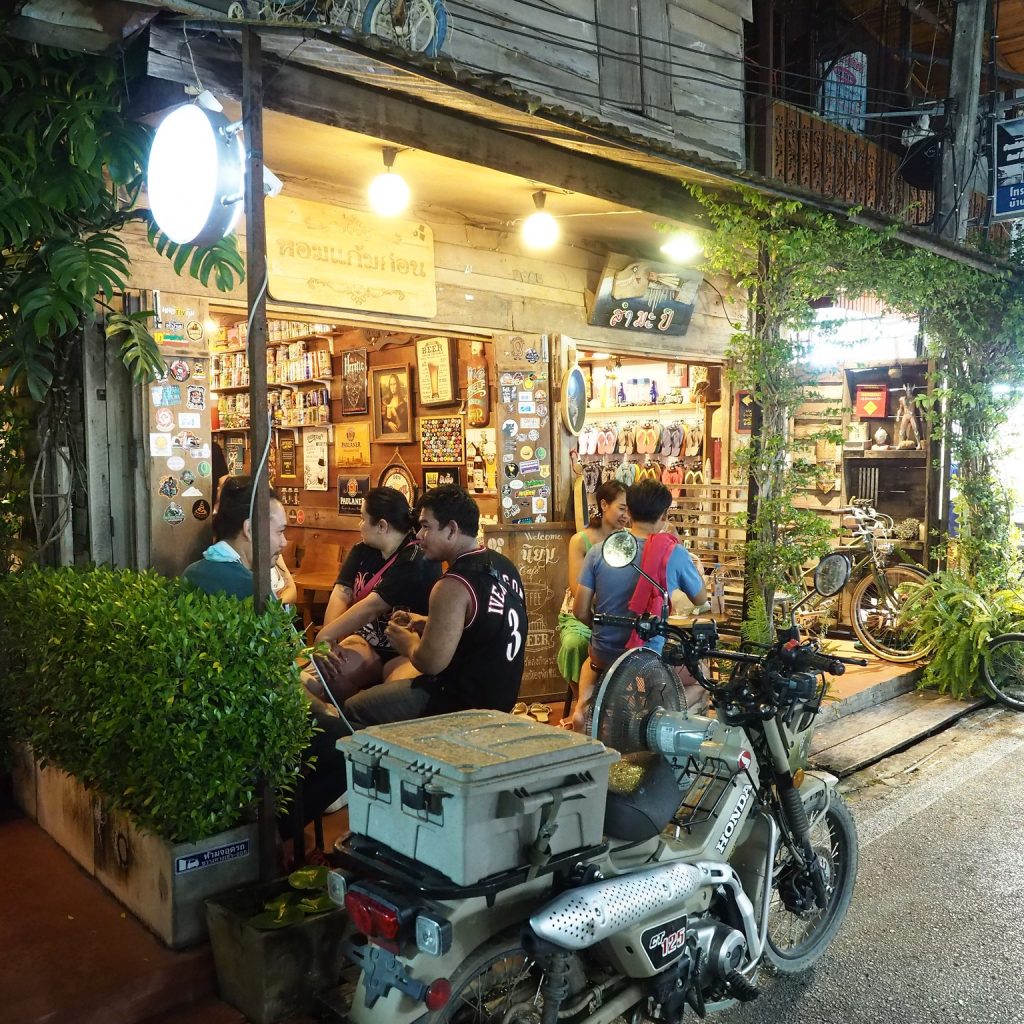
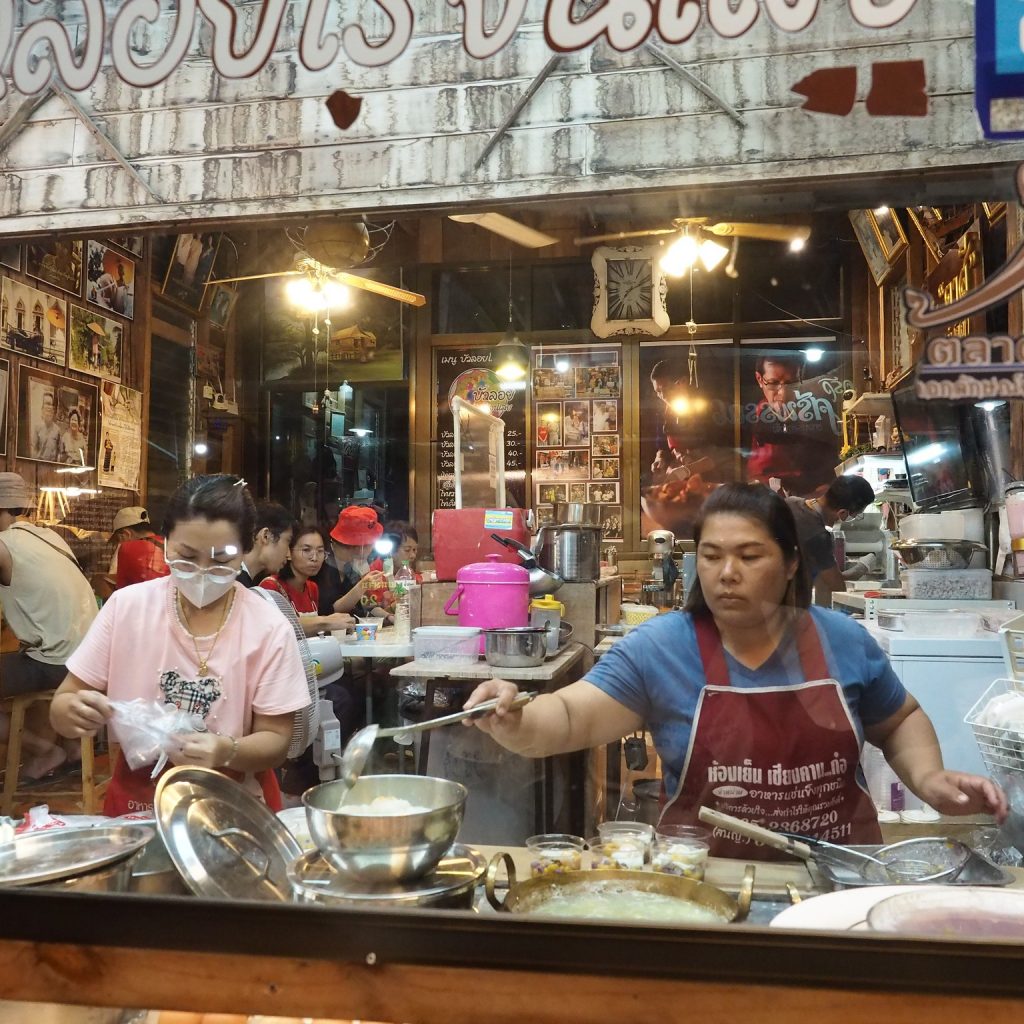
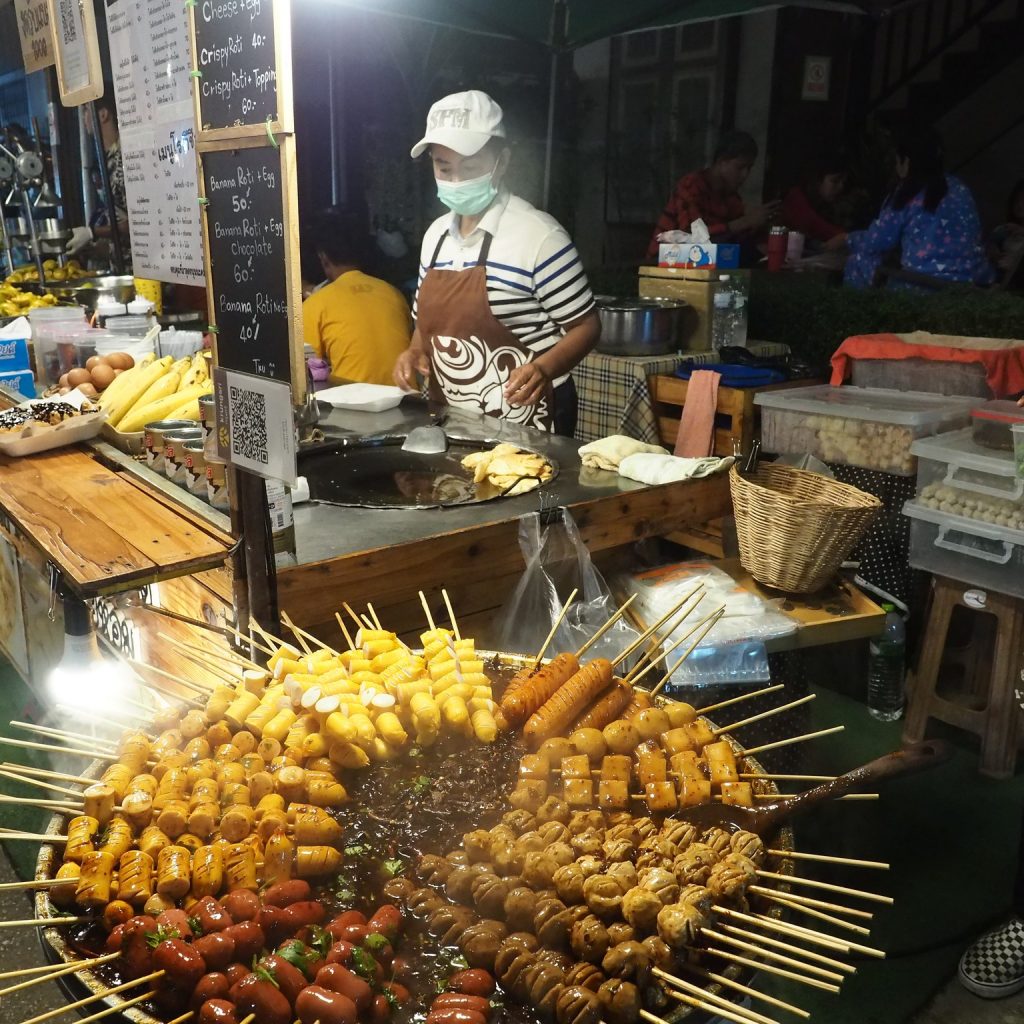
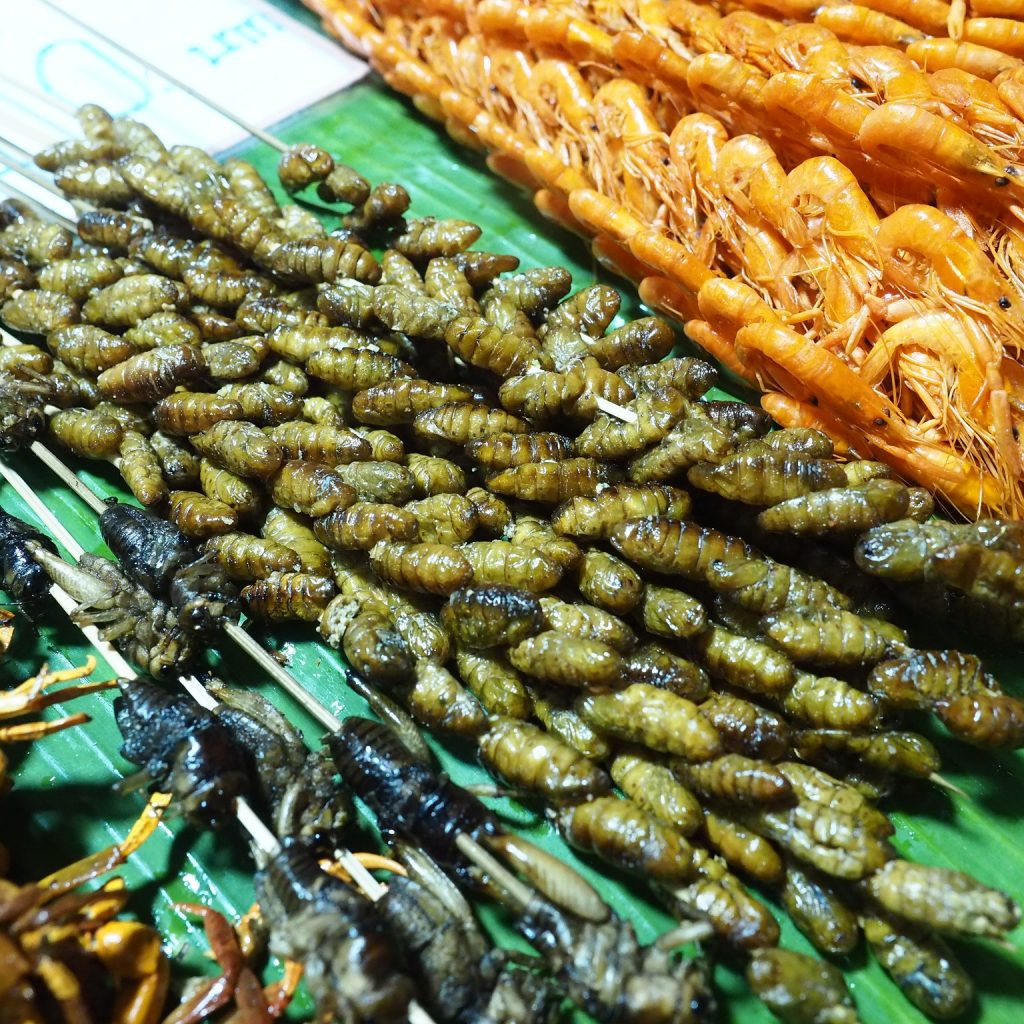
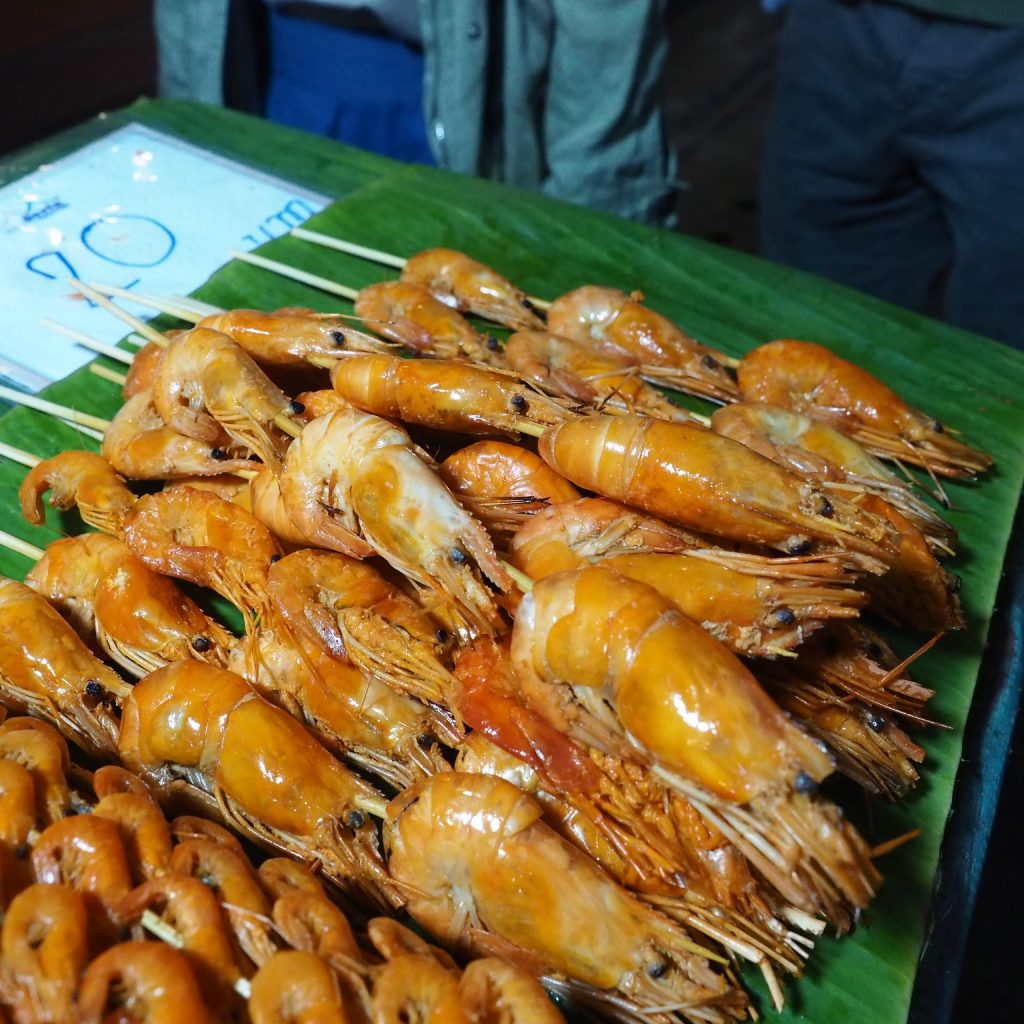
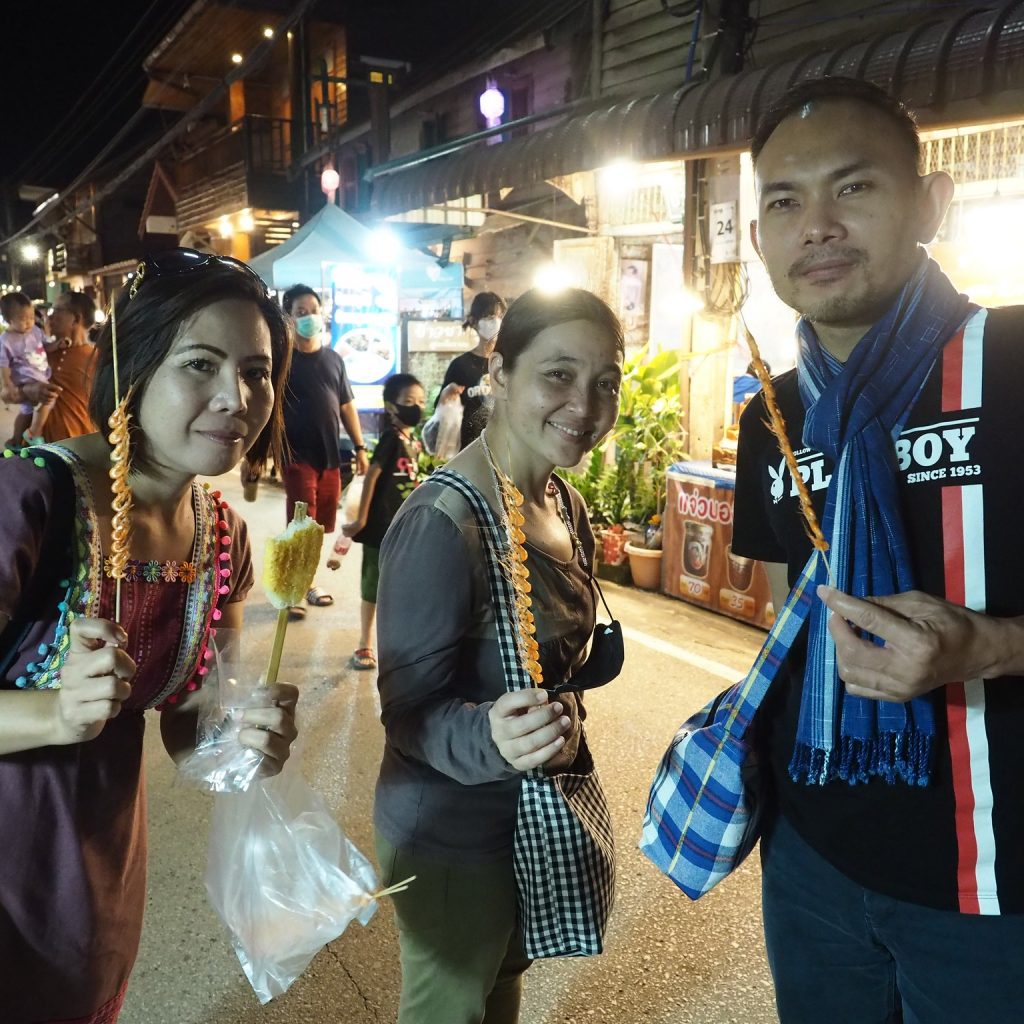
Offering food to monks, a long morning activity in Chiang Khan
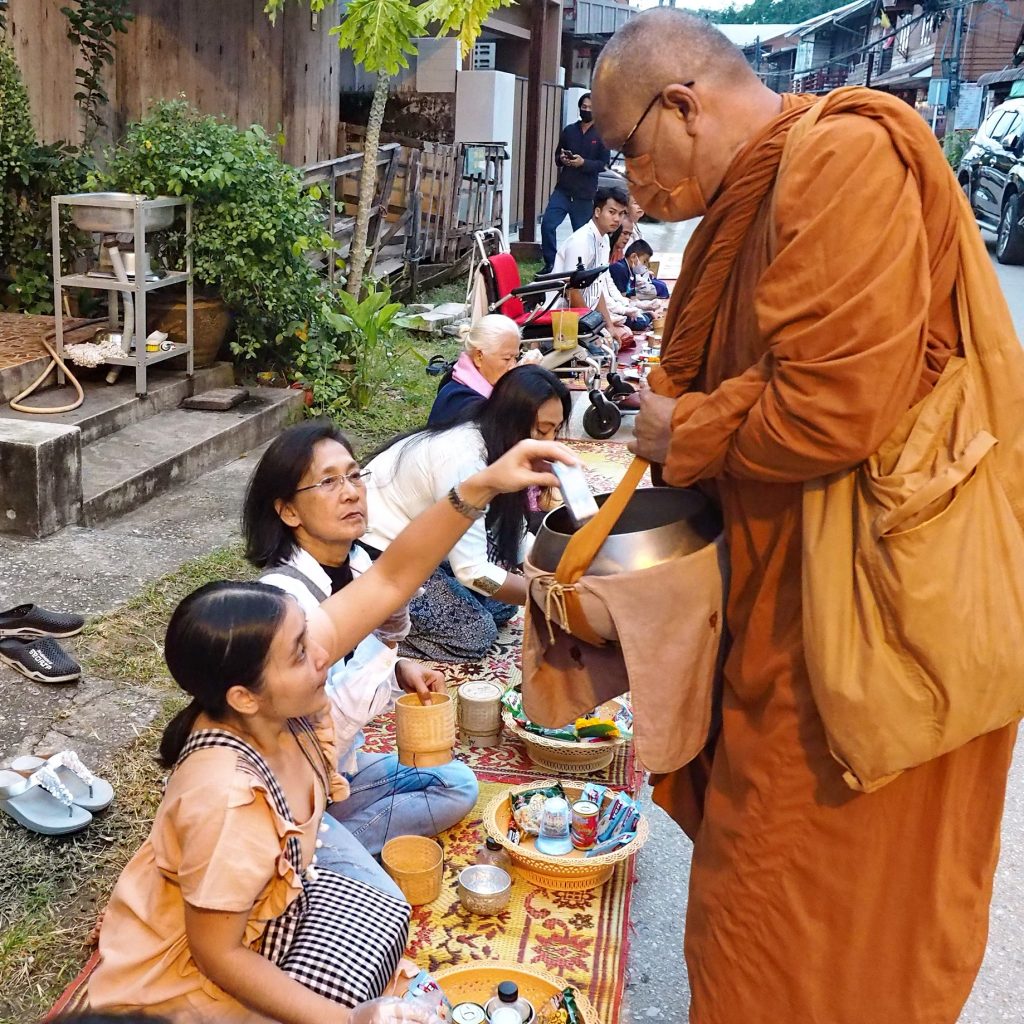
“Wat Phon Chai” is the center of activity for the Phi Ta Khon festival in Dan Sai. It’s hard to say how old the temple is, but it was probably founded several hundred years ago at least. The main buildings are just a small chapel and a square pagoda (pra that) next to it. During the festival, there are usually several activities going on around the temple grounds, as well as it is the final destination for those taking part in the processions.
ฺฺBeliefs and stories of the Naga and Big Buddha, Phon Chai Temple, Loei Province. “Wat Phon Chai” is a religious site located on the bank of the Barren River in Dan Sai City. The location of the temple’s important religion is on a high hill. Which is the local language is called “Phon”, therefore it is called “Wat Phon”. Since when was Wat Phon Chai built, there is no clear evidence. Local historians speculate that it was probably built at the same time as Phra That Si Song Rak was built during 1560-63 B.E. as a residence for monks attending the Phra That Si Song Rak celebration which is consistent with art historians who stated that
Inside the temple, there is a pagoda with an architectural style. Similar to Phra That Si Song Rak But it’s smaller and taller, which should have been built around that time. or after the creation of Phra That Si Song Rak, Villagers believe that the mound that was built as Wat Phon Chai was caused by the soil at the mouth of the serpent in the Buddha’s time, the Naga used to offer this area to the Buddha to stay along with 500 disciples before causing the scaly soil at the mouth of the serpent into a small mound Dan Sai people call this mound “Phon”. Later, a temple and religion were built on the aforementioned mound and named “Wat Phon Chai”.
Above the mound of Wat Phon Chai, there is a royal vihara. It is the largest and most important building of the temple. It is a local architectural style building that is influenced by the Lan Xang architectural style. Facing south towards the barren river and Dan Sai town. It was originally a hall with wooden pillars but has been continuously restored. The upper part is shingled with clay tiles. The lower part is a brick wall holding mortar. have a window Inside that enshrines a large stucco Buddha image, as the villagers call it. “Luang Pho Phra Yai” is a Buddha image in the attitude of subduing Mara. lacquered and gilded with gold, lap width of approximately 79 inches It is a Buddha image in Lan Xang art. local craftsmanship Around the 22nd-23rd Buddhist century, it is assumed that it may have been built along with the construction of Wat Phon Chai.
At the ground of Viharn Luang in the back to the left of the Chukchi base, The presiding Buddha image is attached to the wall with a small cavity similar to a hole, about 40 centimeters in diameter, and about 1 meter deep. There is a small label written at the mouth of the hole saying “Naga’s Hole” from an interview with Phra Mahayuranan Sumongkhalo Assistant Abbot of Wat Phon Chai It made it known that this hole or naga hole was made to replace the original naga hole at the back right side of the Chukchi base that had been closed about 30 years ago.
The original serpent hole had a mouth size similar to the current hole. The hole appeared on the side of the Chukchi base a long time ago. It is assumed that since the construction of Viharn Luang Someone once dropped a dried coconut into a hole. It appears that the dried coconut has appeared floating in the barren river at Wang Wen Pier, which is opposite the Grand Palace to the east. Dan Sai people believe that it is the way up and down the serpent from the barren river that comes to take care of and protect the Big Buddha.
In the past, there was also a story that during the Buddhist holy days it often appeared as mud. or the water was regularly on the Chukchi base and in the lap of the Great God. Some say that it is similar to the serpent’s footprint. The aforementioned mud or water stains are believed to be mud attached to the serpent. who came up to pay respects and take care of Big Buddha at Phon Chai Temple. However, the belief in the serpent hole is consistent with the story. The origin of mound of Wat Phon Chai was formed from the soil scaly from the mouth of the Naga hole. since the time of the Buddha.
Later, Phra Kru Sumonwuthikorn (Luang Pu Yai), former abbot of Wat Phonchai closed the aforementioned Naga hole because he didn’t want the Naga to bring mud into the royal vihara But after closing the hole, Wat Phon Chai was not prosperous. But it has deteriorated, causing a Naga incident in 1993 to take over Grandma Sompong Chamontri, a villager in the Dan Sai Sub-district, along with saying why they blocked the path of the Naga. because the Naga was unable to come up and take care of the Great God Closing the Naga’s hole is like closing a temple.
After the Naga came back, the monks, villagers, and the temple committee agreed to open the hole behind Phra Chao Yai again. By moving to the left of the Chukchi base for the Naga to take care of the Great God Since then, Wat Phon Chai has prospered and is known to both Thais and foreigners as a venue for Boon Luang and Phi Ta Khon games which are famous all over the world…
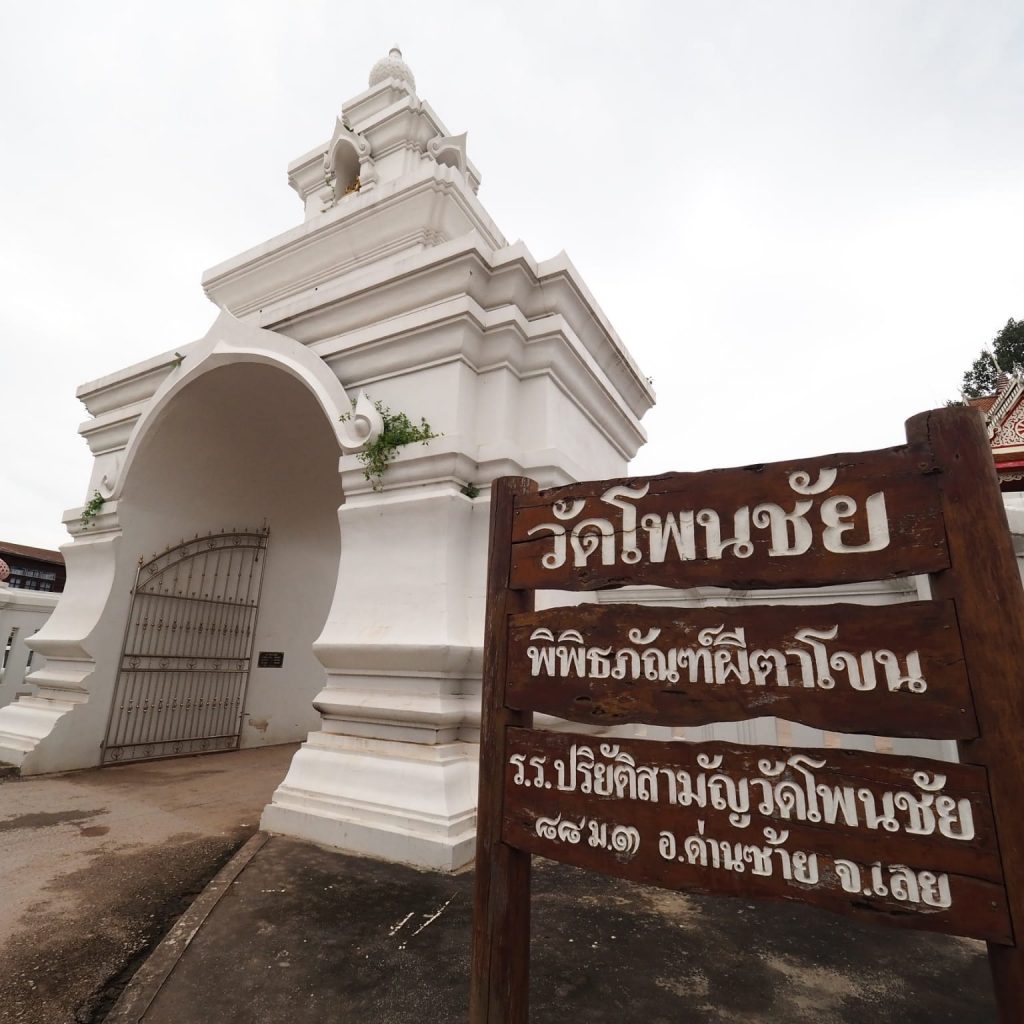
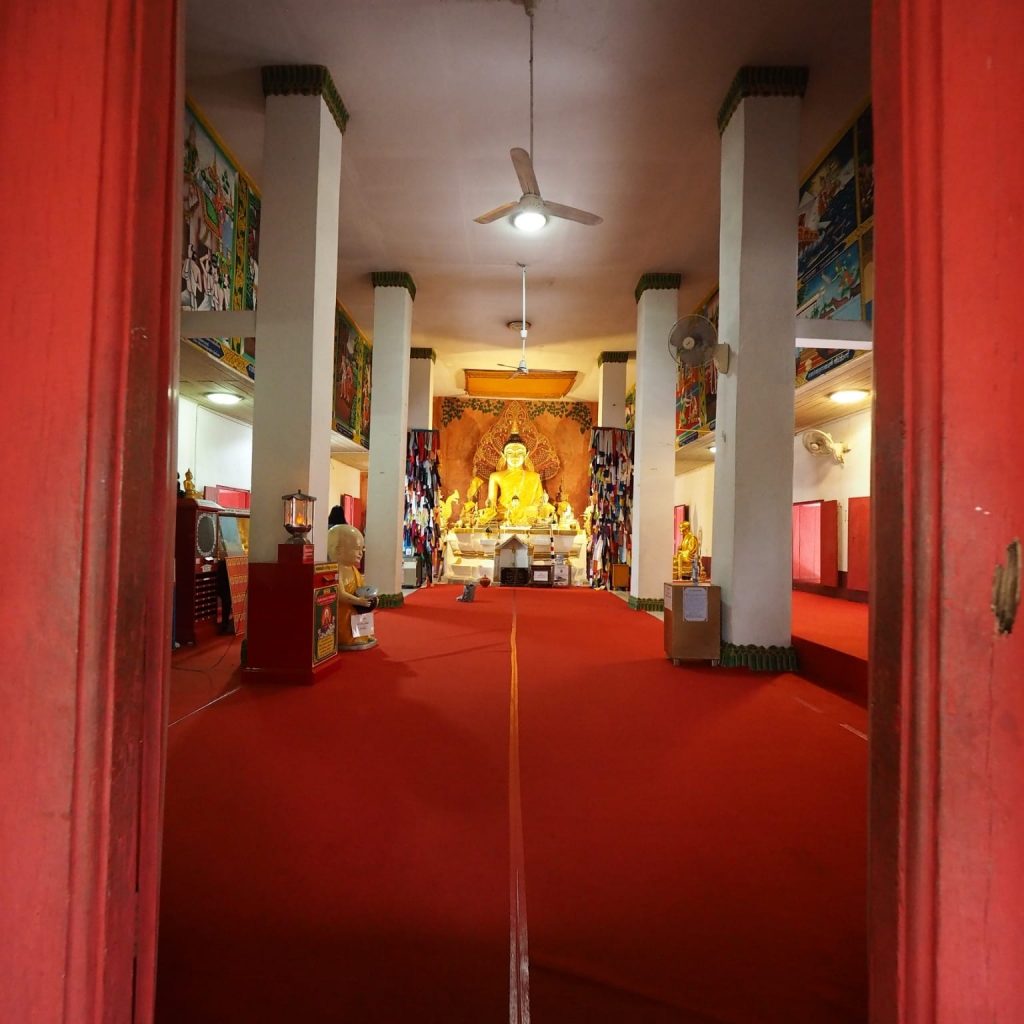
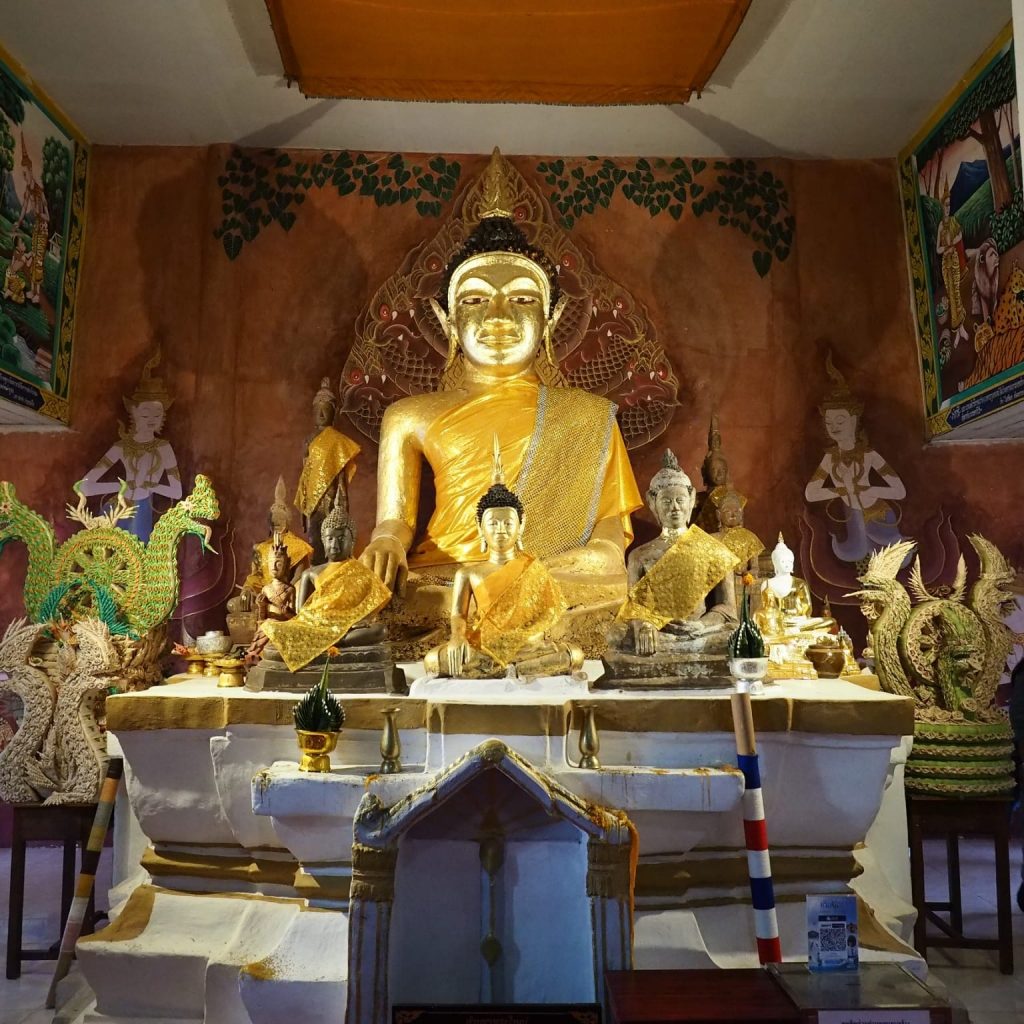
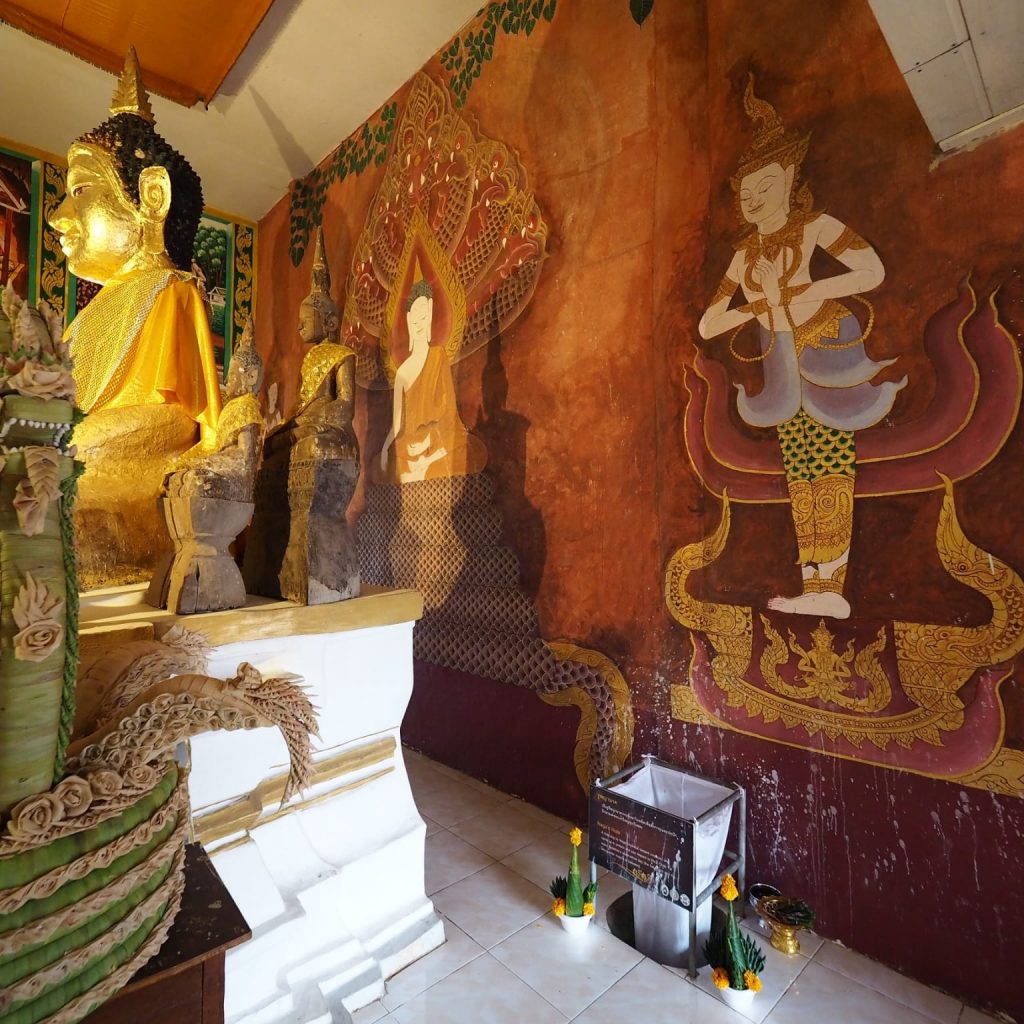
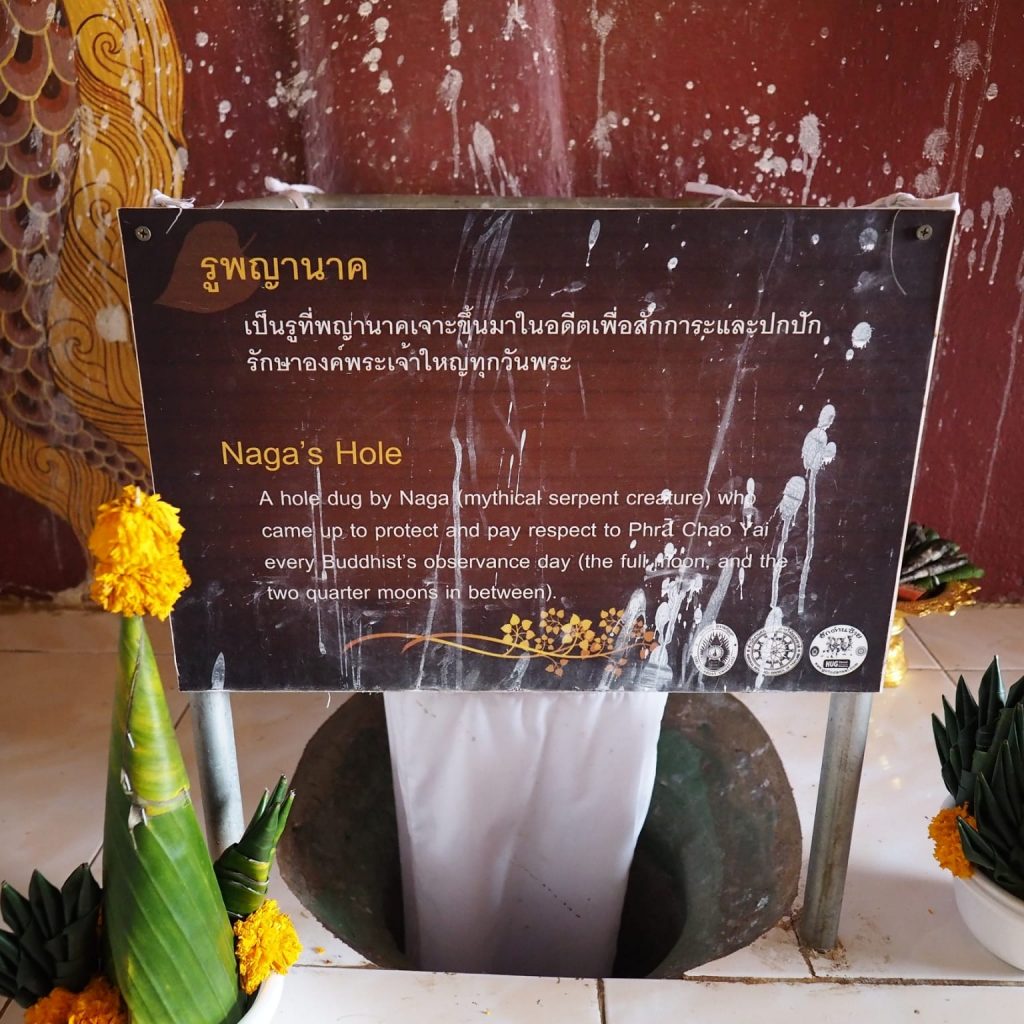
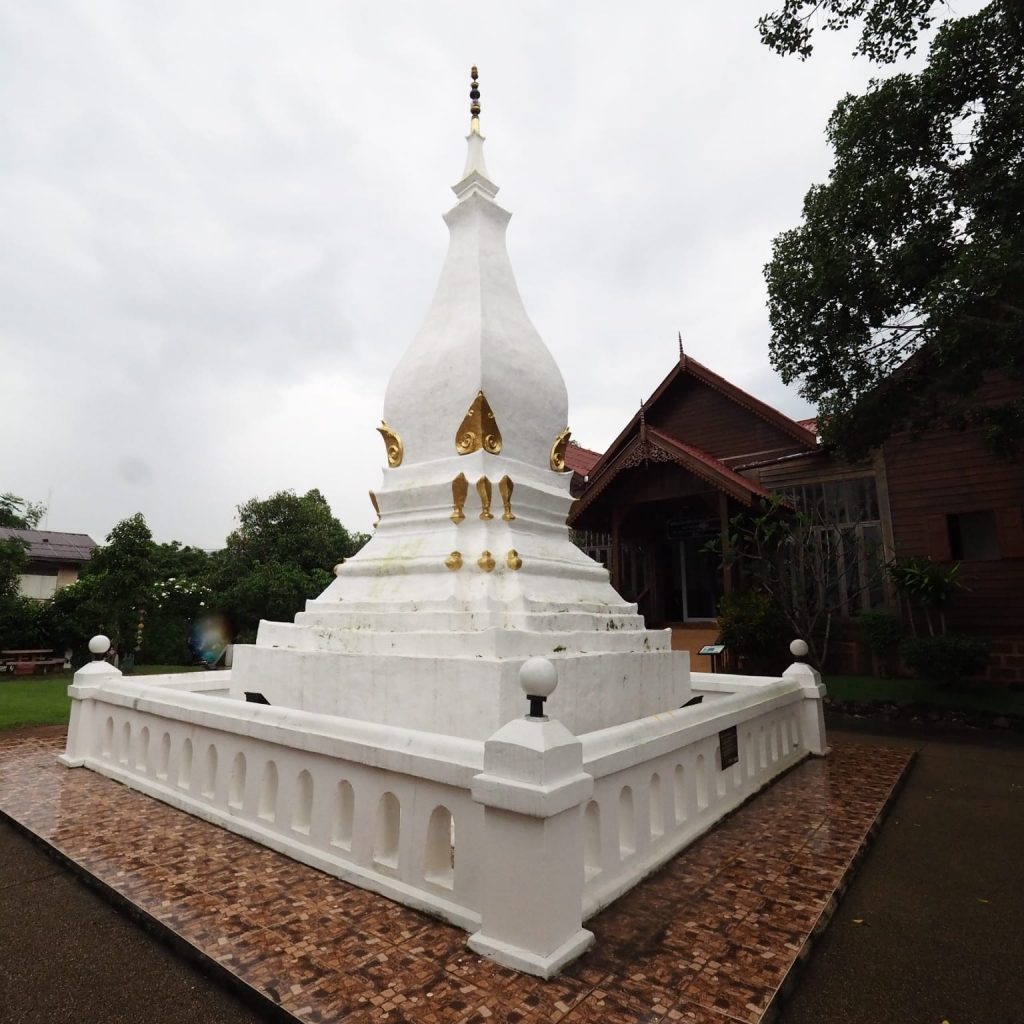
“Phi Ta Khon museum” is situated in Wat Phon Chai, Amphoe Dan Sai, Loei. It exhibits the history of inherited culture and traditions including “Phi Ta Khon”, the traditional amusement that has been inherited for a long time. Boon Phi Ta Khon Festival is a part of the Boon Luang Festival, a big merit festival of the year in this area that combines the Boon Prevet Festival (Heet Duen See) and Boon Bung Fai Festival (Heet Duen Hok) together. The purpose of the Boon Pravet Festival is to tell the Sermon of the last great incarnation story of the Buddha. The purpose of the Boon Bung Fai Festival is to celebrate the city angels and to make the rain falls in the right season. Phi Ta Khon in the parade will entertain people. It is said that Phi Ta Khon might come from wearing a mask that looks like Khon’s head. Some call it “Phi Ta Kon”, “Phi Tam Kon”, and eventually “Phi Ta Khon”. Apart from the exhibition of culture and traditions, the museum also exhibits various kinds of Phi Ta Khon. There are 2 types of Phi Ta Khon. The first type is Phi Ta Khon Yai, both female and male. This type of Phi Ta Khon is not made every year except in the determined ceremonies. The second type is Phi Ta Khon Lek that we see every year. There is also the demonstration of Phi Ta Khon mask making which has the following parts. The head is made from a half-folded earthenware steamer which looks like a hat. The face is made from a base of a coconut branch. It is sewn with the head part and then pierced for the eyes. The nose is made from carved softwood which looks like a human’s nose. Now the trunk-shaped nose is more popular. The decoration is done with natural colors in the past such as calcium hydroxide, red lime, ashes, Curcuma, and soot. However, oil color has been used instead since it gives a more colorful color. Then small pieces of cloth are sewed together with the streamer and the face and will cover the shoulders. The process of Phi Ta Khon masks is finished. The museum also provides a souvenir shop for visitors. Traveling From Dan Sai District Office, use the Public Highway No. 2114, passing Dan Sai Police Station and Dan Sai Market. After passing the bridge, “Wat Phon Chai” is on the left-hand side. Phi Ta Khon is in this temple.
Credit: https://www.tourismthailand.org/Attraction/phi-ta-khon-museum
Phi Ta Khon puppets inside the Phi Ta Khon Museum, Phon Chai Temple
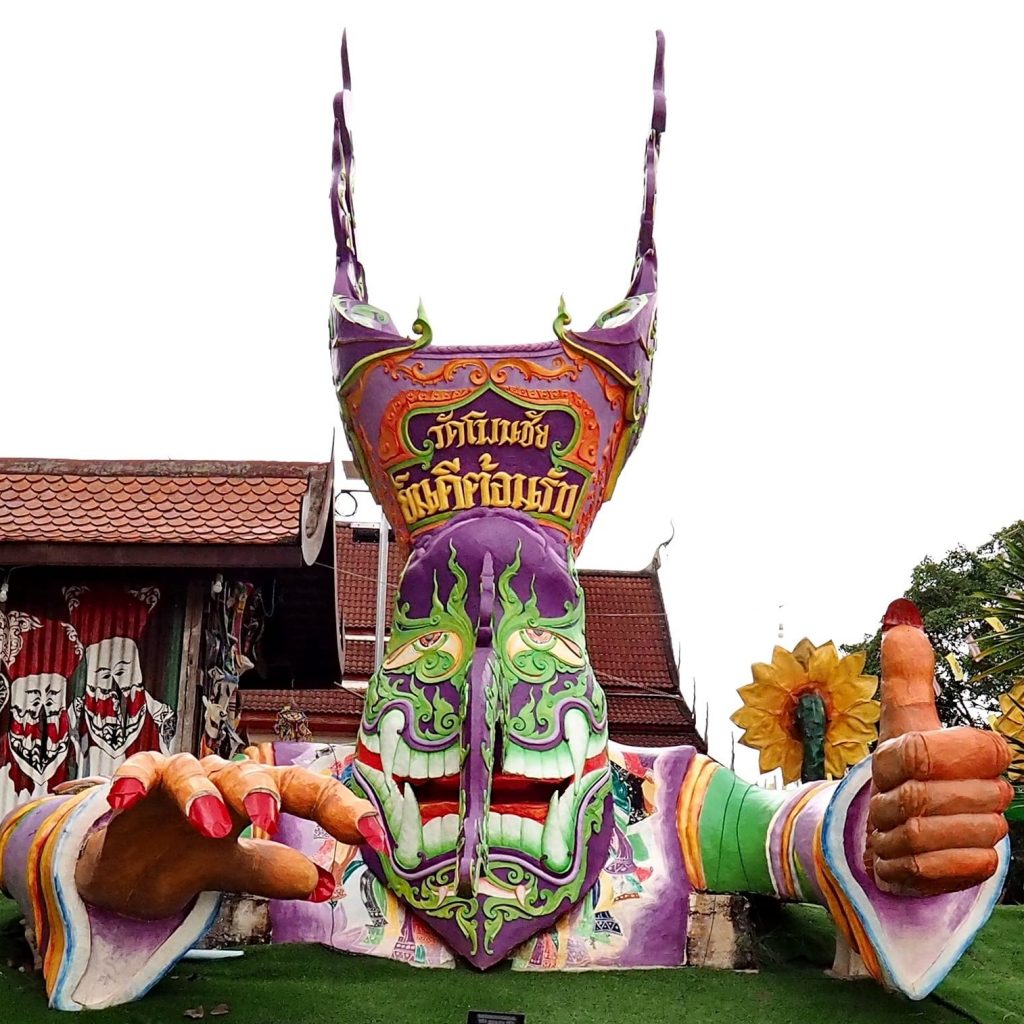
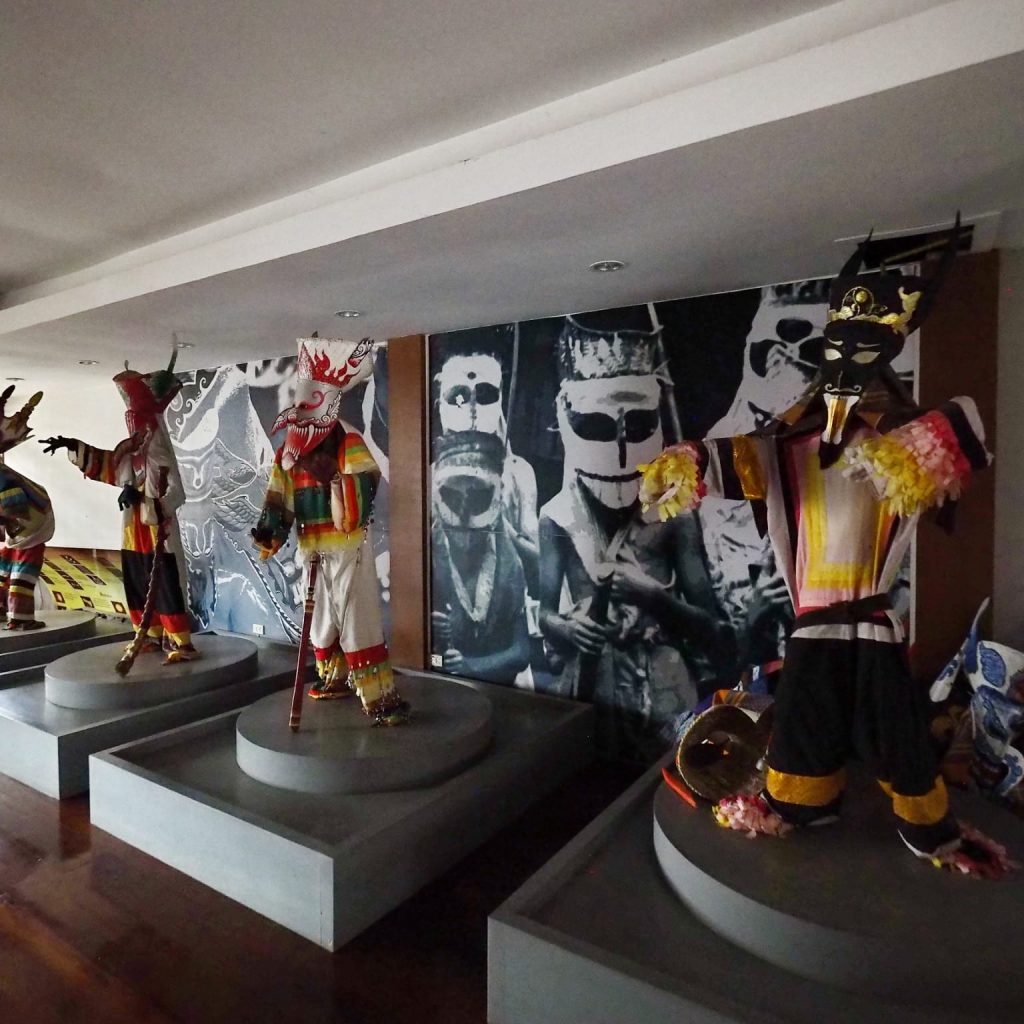
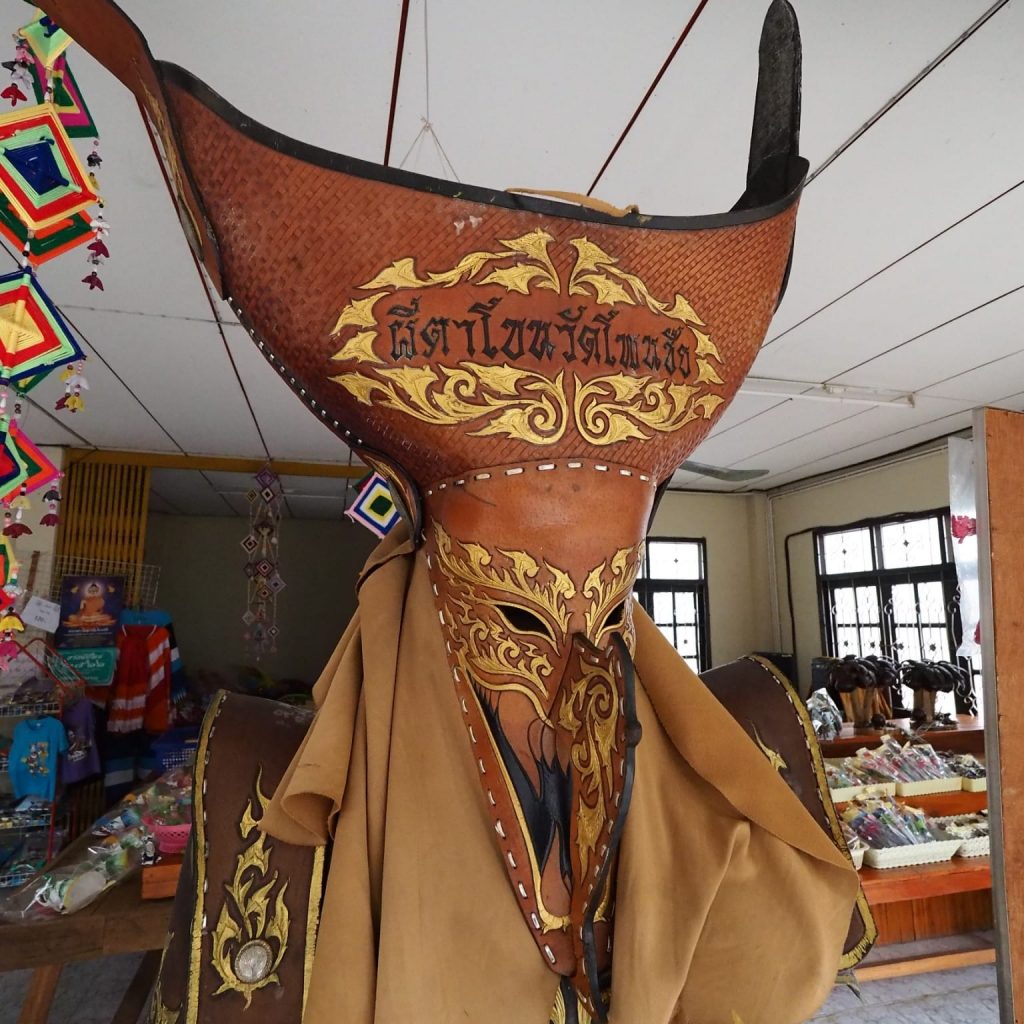
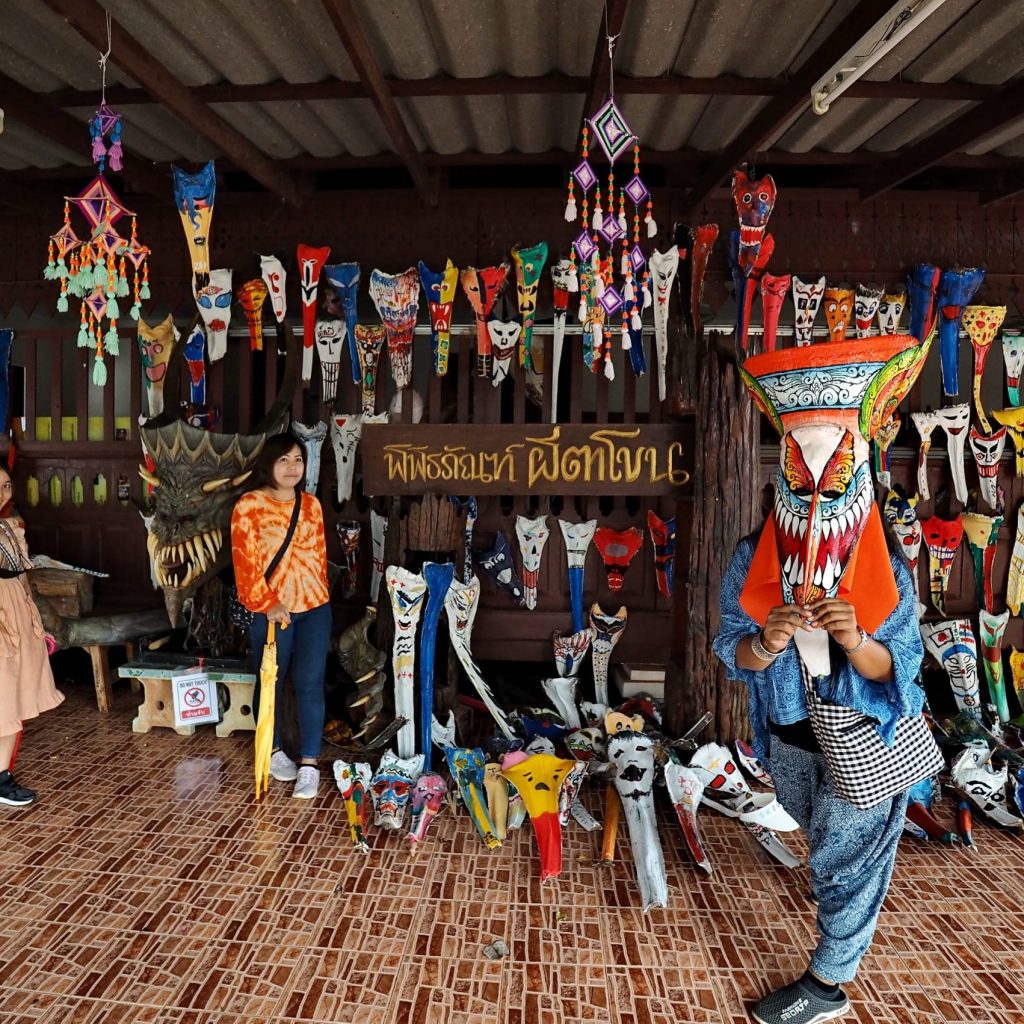
“Wat Somdet Phu Ruea” is a Buddhist temple perched on a small hill at the beginning of the road which goes up to the Phu Ruea National Park. It is worth a visit either on the way up or down the park and can be an interesting viewpoint to watch the sunset. The highlight is the Ubosot (ordination hall) in carved teak wood which houses a magnificent Buddha image named Phra Phuutha Chao Phaisatchaya Khuru Waithunyaprapha Chom Phaet or Phra Kring Powaret, an image of Buddha in the attitude of submitting Mara with the left hand holding a jar of holy water. There are also wall paintings on which you will recognize representations of King Rama 9. In addition to the ordination hall, the surrounding area has four wihaan rai which consecrates important images of Buddha including one lying in Nirvana attitude carved in Mekong Jade. But the element that can be seen from afar is the golden chedi. Wat Somdet Phu Ruea Ming Mueang (its complete name) is an important temple built in the 20th century part of its name comes from Princess Somdet Phra Srinagarindra Boromarajajonani who donated the money to purchase the land.
coordinates: F952+3QM, Nong Bua, Phu Ruea District, Loei 42160
